
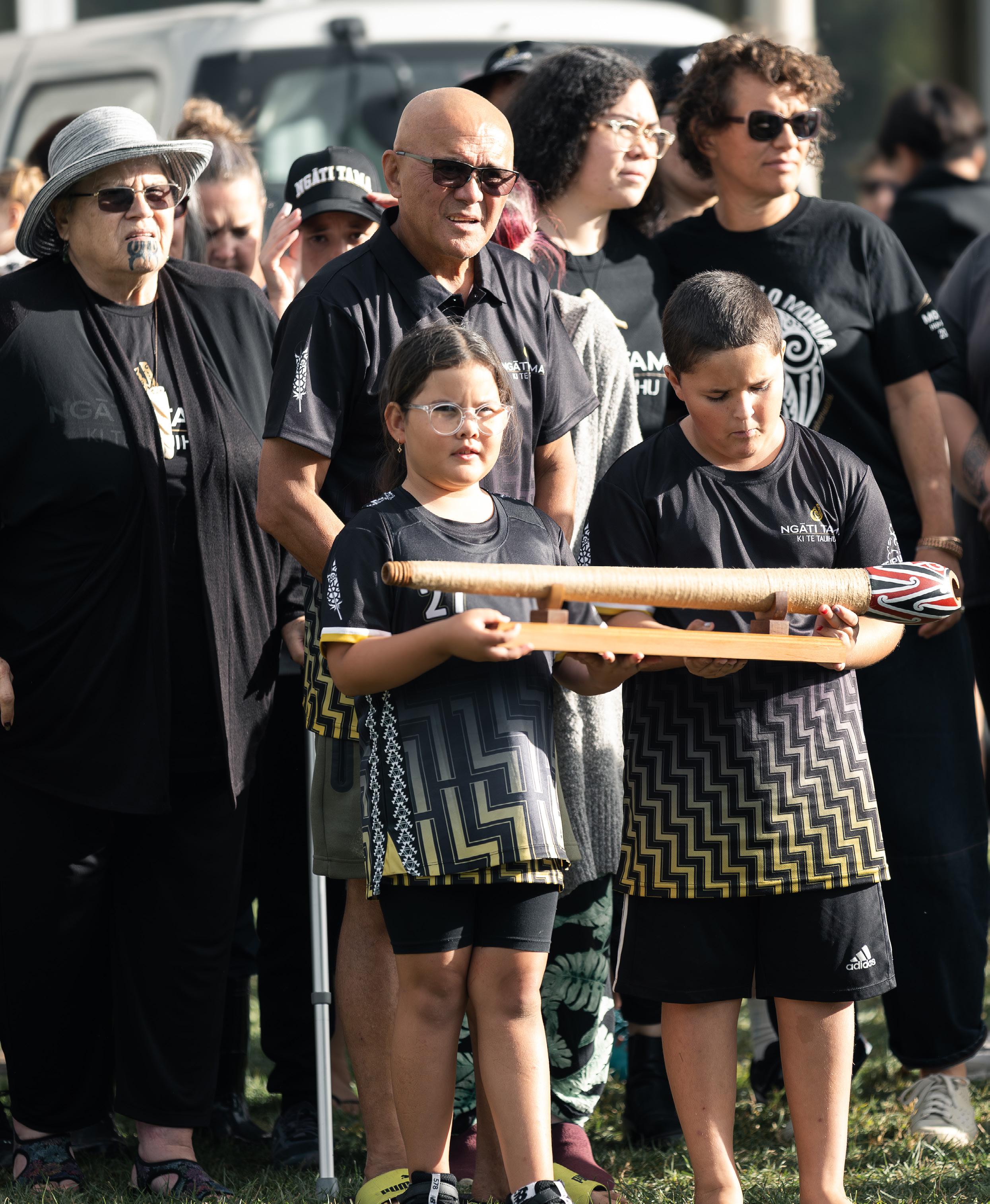
MATARIKI MĀ PUANGA
HUI-Ā-TAU AGM 2024
NGĀTI TAMA KŌRERO
WHALE STRANDINGS
WĀNANGA PAEPAE
TE IPUKAREA 2025
WHĀNAUSAVER
WHĀNAU VOICE
TAMARIKI DAY
GRANTS

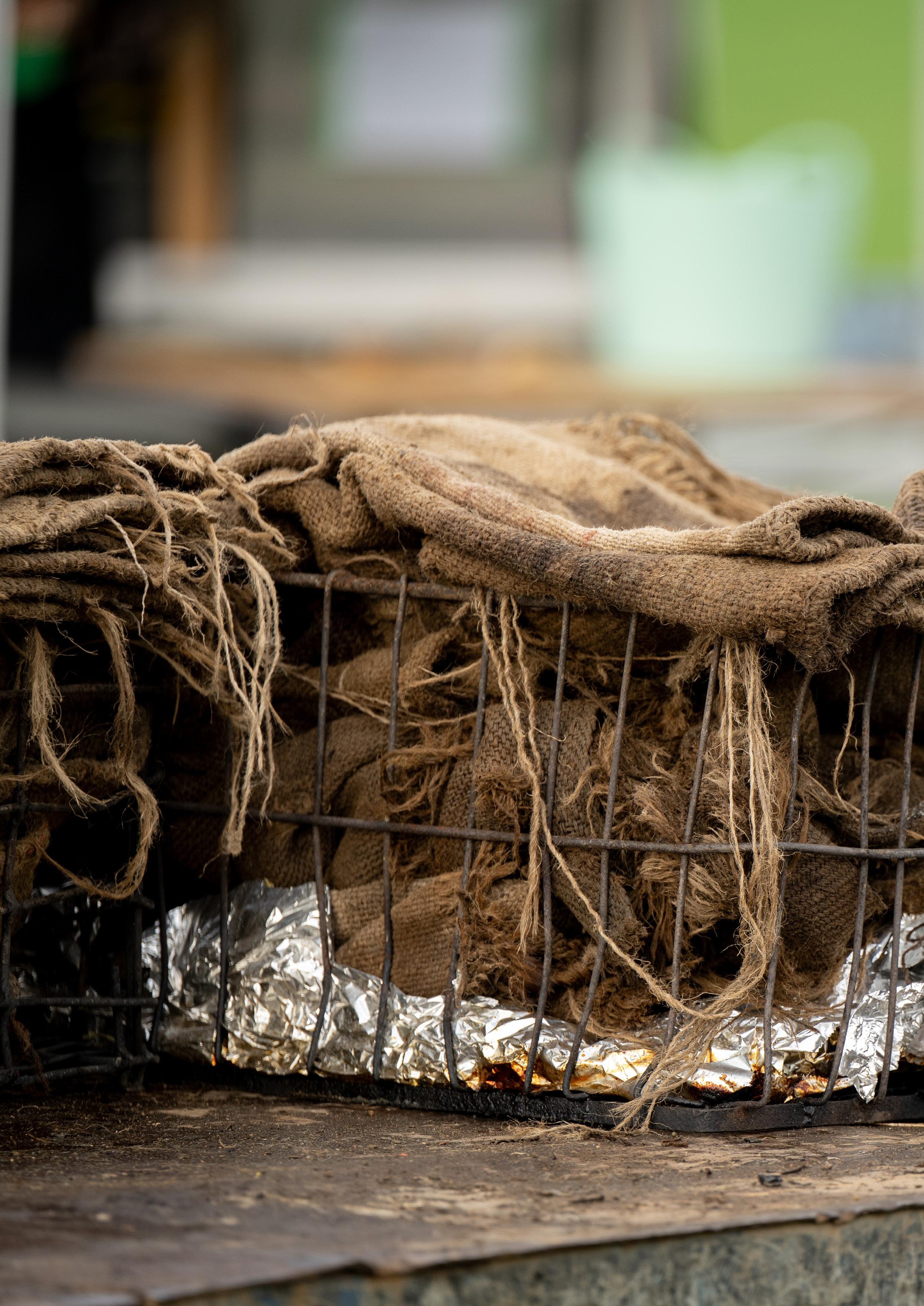
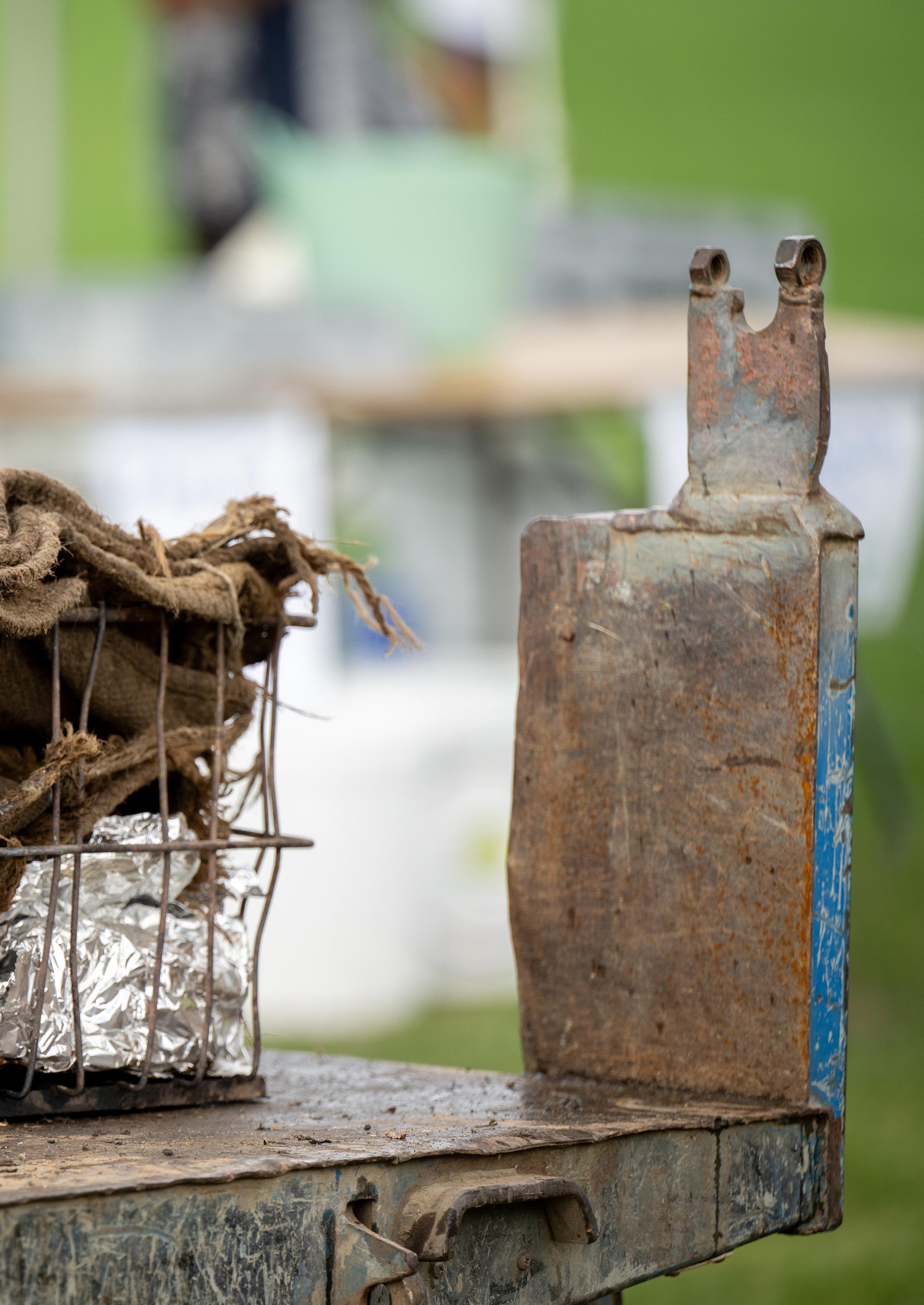
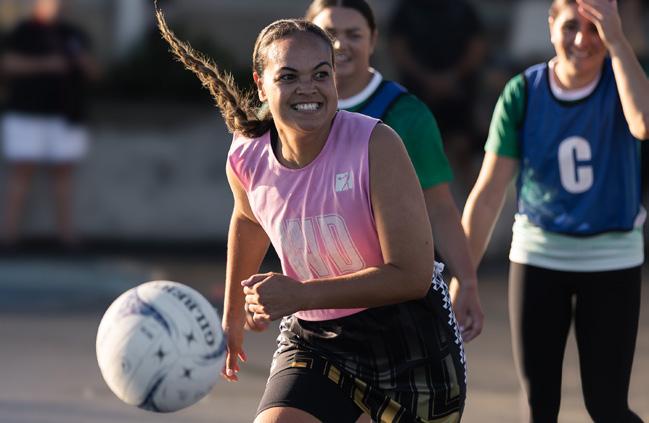
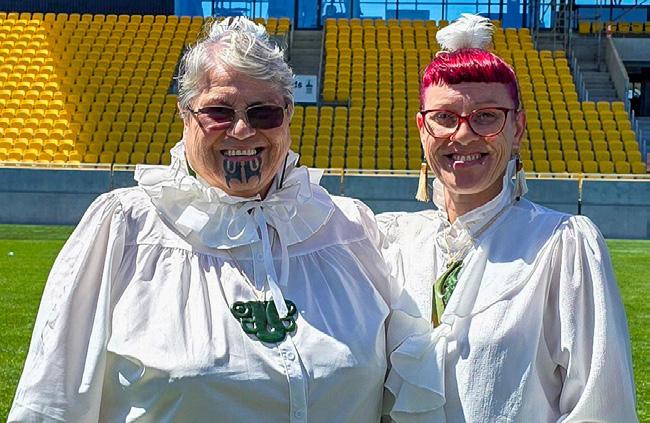
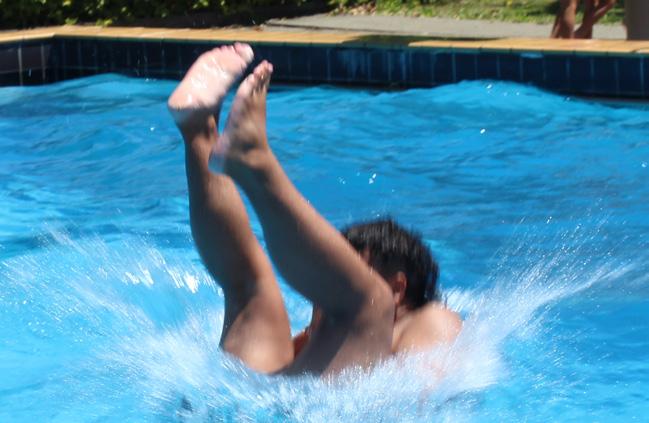
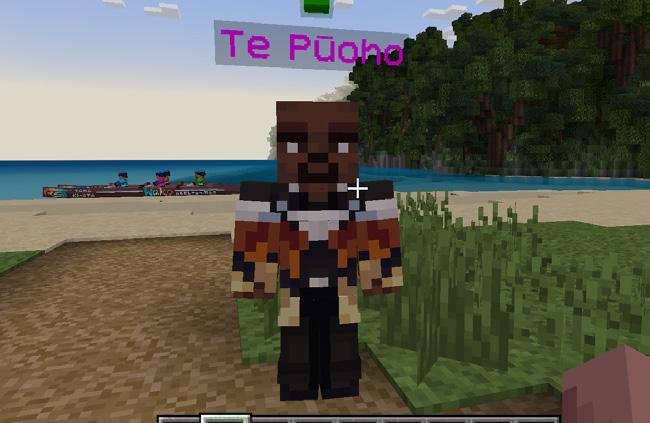
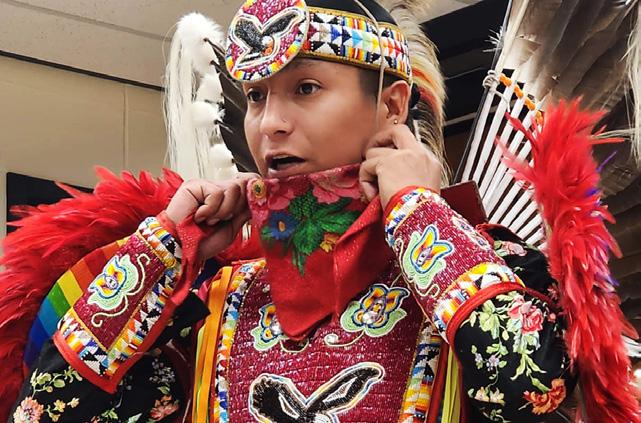



MATARIKI MĀ PUANGA
HUI-Ā-TAU AGM 2024
NGĀTI TAMA KŌRERO
WHALE STRANDINGS
WĀNANGA PAEPAE
TE IPUKAREA 2025
WHĀNAUSAVER
WHĀNAU VOICE
TAMARIKI DAY
GRANTS








CHIEF EXECUTIVE AND CHAIR UPDATE
Tūiri te manu he para rau rere
Whakaomaoma ki tua o Kōhanga-te-rangi
I riro te tangata i te mārakiraki, i riro te tangata i te mātongatonga
I riro te tangata i te marangai, i riro te tangata i te māuru
I riro i tōna pou whakairo ki
tua o te moana tōrino
Ka uhiuhia ki te wai o nonokura,
Tāia, whiti ana ki te pō uriuri, ki te pō tangotango, Ki te kupenga nui o Taramainuku....
Tākiritia te Tini o Taramakau ka rere,
ka rere hei whetū rikiriki
Ki te tāhūhū nui o Ranginui
e tū nei
Kau ana Rehua
Ko Puanga kei runga, ko Maru kei raro
Tēnei te aranga o te Tau o Puanga e… hai

BUTCH LITTLE TE HEAMANA, CHAIR

HEMI SUNDGREN TE POUWHAKAHAERE, CEO
E te whānau whānui o Ngāti Tama, tēnā koutou katoa
Over the past six months, Ngāti Tama has continued to grow our kaupapa, strengthen our connections, and celebrate the vibrancy of our people and places. Here are some of the highlights that have shaped this period:
Our Hui-ā-Tau and Wānanga-ā-Whānau held in Mohua was a powerful gathering of whānau, reaffirming our collective vision and values. The hui provided a space to reflect on our achievements, share updates on key kaupapa, and hear directly from whānau about their aspirations for the future. It was also an opportunity to celebrate our cultural identity and deepen our connection to whenua and wai in Mohua.
In January, we hosted a vibrant Tamariki Day filled with laughter, kai, and whanaungatanga. Held on 17 January 2025, the day featured a BBQ, spot prizes, and a manu competition that brought out the best in our tamariki and their whānau. Events like these are a reminder of the importance of nurturing our youngest generation and creating joyful spaces for them to thrive.
Our participation in Te Mana Kuratahi and Te Ipukarea continues to be a source of immense pride. These events not only showcase the talent and passion of our rangatahi but also strengthen our cultural identity and visibility on the national stage. Our support for these kaupapa reflects our commitment to te reo Māori, kapa haka, and the intergenerational transmission of mātauranga.
These moments remind us of the strength we hold when we come together as whānau, grounded in our tikanga and united in our vision for the future.
Since its launch in November 2024, the Te Uru Tahua – WhānauSaver programme has seen strong uptake across Te Tauihu. While Ngāti Tama uri are still building momentum, the early response reflects a growing appetite for kaupapa Māori financial tools that support whānau to save, plan, and thrive. WhānauSaver is more than a savings account—it’s a pathway to financial independence and long-term wellbeing.
These kaupapa remind us that our strength lies in our people. Whether we are gathering in Mohua, celebrating our tamariki, performing on the national stage, or planning for our financial futures, we do so with pride in who we are and where we come from.
Nā māua ko Butch, me te aroha nui ki a koutou katoa.
21 JUNE | 2025 |
Puanga and Matariki illuminate Te Tauihu. Exploring Tradition, Ritual and Reflection.

As the first glimmer of Puanga and Matariki lights the skies of Te Tauihu, iwi members gather to honour these celestial markers that symbolise renewal, reflection, and connection to the environment and our ancestors. For many of us, Puanga and Matariki herald the beginning of a New Year, or Te Tahi o Te Tau, a time to look back, embrace the present, and prepare for the seasons ahead. As our CEO, Hemi Sundgren described on the morning, “Rooted in our cultural traditions, these stars are much more than cosmic events— they are beacons of identity and unity”.
Central to this year’s celebrations was the moving Te Hautapu ritual, where approximately 35 iwi members came together on Moturoa/ Rabbit Island, in solemn occasion under the shimmering stars. The scent of burning offerings mingled with the crisp, early dawn air as rhythmic chants filled the seaside with reverence and emotion. Attendees honoured their tūpuna, and those who passed by calling their names, imagining their spirits transcending this earthly realm to become stars in the night sky. “This act of remembrance forged an indelible connection between the living and those who have passed, a bond that defies time and space, Sundgren said.
Puanga and Matariki celebrations fill the heart with cultural pride and remind us of the profound beauty of unity, tradition, and reflection. They are not merely stars but luminous threads weaving together the stories of our ancestors, the living, and the land, fostering a cultural identity that shines as brightly as the cosmos above.
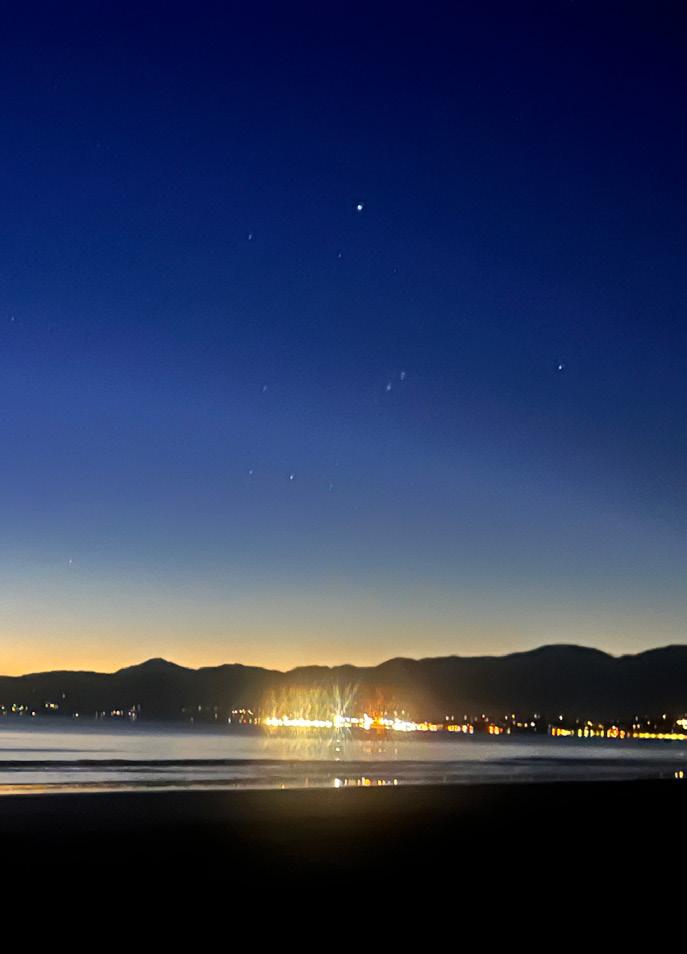

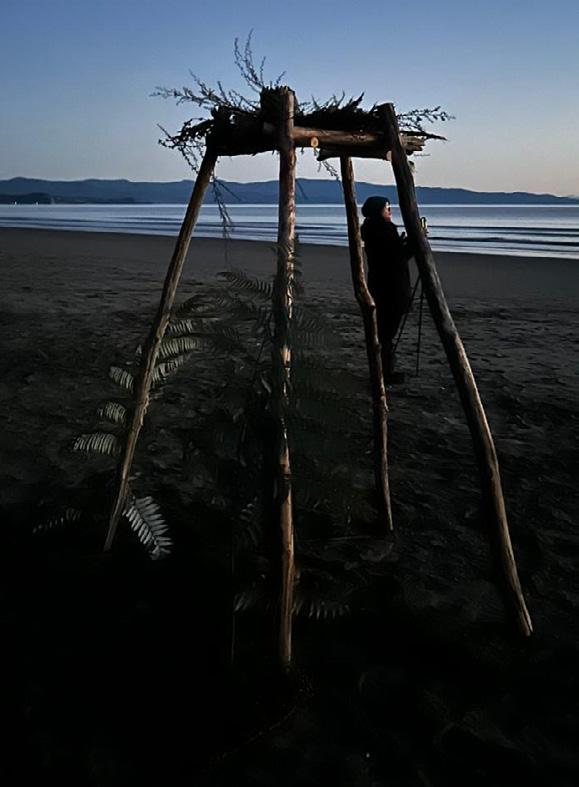




6 - 8 DECEMBER | 2024 | ONETAHUA MARAE
Iwi members from near and far, came to Mohua to celebrate the accomplishments of the previous financial year.
Parapara te maunga
Pariwhakaoho te awa
Te Waikoropupū te puna o te ora
Te Tai Tapu te moana
Ngāti Tama ki Te Tauihu te iwi
Tīhei mauriora!
On Friday evening, the proceedings began with the usual pōwhiri, in particular, for those ‘waewae tapu’ or first time visitors to the marae. It’s also an opportunity for our whānau to bring their ‘kawe mate’ or photos of their recently deceased to the hui. It’s a very special time for the iwi to mourn and remember our loved ones.
On the first night, after dinner, and everyone has had the chance to settle in, the evening programme begins with shared karakia. Those who wish to, are invited to offer some words of prayer and comfort. Karakia and waiata cards are provided as a useful learning and teaching tool to help guide people during these contexts.
https://vimeo.com/1092649992?share=copy#t=0
An action-packed weekend is designed to showcase our rohe and create opportunities for whānau to connect, and this hui was no different. Despite some last-minute changes to the programme on Day Two, it did not dampen the enthusiasm as some hiked along Wainui Bay to the historical pā siteTaupō Point, while others paddled in the shallows of the incoming tide with their children.
A BBQ lunch and shared kai at Ligar Bay was a welcome respite, where children and adults alike, ate, swam and enjoyed each other’s company on a beautiful summer’s day.
The AGM provides iwi members with the opportunity to mix and mingle and reconnect with their roots. The experience only gives them a snapshot of the life and times of our ancestors in Te Tauihu but enough to encourage them to keep returning every year.
Day 3 is set aside for the Annual General Meeting which was held at the Golden Bay High School Hall in Tākaka this year.
A ‘rolling morning tea’ was provided to keep everyone fed and watered and the scones with jam and cream were very popular. At the conclusion of the hui, after closing comments and karakia, everyone was provided with a packed lunch and the bus made a hasty retreat for Picton.
We look forward to seeing everyone at the AGM 2025 which will be held at Mārahau near Motueka from 12-14 December. Tēnā tātou katoa.











Highlights from our Hui-ā-Tau.


APRIL
Whakatū Marae in Nelson was the venue for the pōwhiri to the iwi of Te Tauihu to celebrate the 7th Te Ipukarea Festival hosted by Ngāti Tama in the first week of April this year.
Despite the inclement weather and the need to cancel a few of the events, it failed to dampen the spirit of the people who gathered at the marae and Saxton Field Complex to cheer on their relatives taking part in the annual cultural and sporting fixtures.
The eight iwi o Te Tauihu competed in a host of events for all ages and abilities including Touch Rugby, Netball, Basketball, Euchre, Table Tennis, Kaumātua Games, Debates and culminating in the ever popular crowd-puller, Tug of-War to complete the competitive sections.
The inclusion of kapa haka and debates this year gave all iwi members both young and old, competitors and spectators alike, an opportunity to celebrate our cultural diversity and

uniqueness in these newly introduced sections. The kapa haka especially proved highly popular and will hopefully be included in future festivals.
At the completion of the entertainment, everyone congregated for the awards ceremony whereupon the designated taonga were handed to the overall section winners.
Netball: Rangitāne
Table Tennis: Ngāti Kuia
Euchre: Rangitāne
Debates: Ngāti Tama
Basketball: Ngāti Toa
Tug o-War: Te Āti Awa/Ngāti Koata
Touch: Ngāti Toa
Sportsmanship: Ngāti Apa ki te Rā Tō
Te Ipukarea Festival 2025 concluded with a sumptuous hākari at the football pavilion.
Ngāti Tama would like to take this opportunity to thank everyone who made this yet another memorable occasion.
Tēnā koutou, tēnā tātou katoa.
CHECK OUT THE HIGHLIGHTS
https://vimeo.com/user185989254/ipukarea1
https://vimeo.com/user185989254/ipukarea2
https://vimeo.com/user185989254/ipukarea3

What was the best part of Te Ipukarea for your whānau?
Te Ipukarea 2025 for me was really beautiful to be apart of.
I haven’t had much involvement in iwi gatherings in recent years so I was blown away by the participation of whānau and the organisation. I caught up with lots of whānau that I hadn’t seen for years which was really special.
What sports did you and your whānau participate in?
I was looking forward to winning in the waka-ama sprints, but luckily for the other iwi the weather wasn’t great on the day. The euchre tournament was both hilarious and serious competition. Seeing the cunning oldies winks and nods. My wife played euchre and netball, and my son Marshall from Christchurch came up and played basketball. They both had a fabulous time.
Have you ever attended a Ngāti Tama event?
If this is your first time, please tell us how this experience was for you and your whānau?
I have attended wānanga before but with a busy life I haven’t attended one in a while. It was nice to reconnect with whānau who I haven’t seen in a long time. My whānau thoroughly enjoyed the weekend and want to thank the organising crew, you all did an outstanding job.
Any advice for whānau attending kaupapa for their first time?
I am really interested in being more involved with my iwi going forward and regret not being active in the iwi space in the past years. My advice to whānau would be to come along, once you get your foot through the door it becomes easier. Best part about it is making new connections with whānau that you didn’t have before and connecting to the whenua where our tupuna once were or still are.
What type of tupuna do you aspire to be?
Deep question, I get a lot of my inspiration from my koro Maui Mitchell and grandad Rex Delaney. Both of these fine gentlemen were honest, defined and humble blokes. I hope I’ll be remembered and honoured as I do them.

Ko Parapara te maunga
Ko Pariwhakaoho te awa
Ko Tokomaru te waka
Ko Onetahua te marae
Ko Ngāti Tama ki Te Tauihu te iwi
Henare Te Keha rāua ko Piraka Tanginui ōku tūpuna



Ko Parapara te maunga
Ko Pariwhakaoho te awa
Ko Tokomaru te waka
Ko Onetahua te marae
Ko Ngāti Tama ki Te Tauihu te iwi
Ko Rameka Te Ketu rāua
Ko Mere Mataitua ōku tupuna
Ko Kiri Croasdale tōku ingoa



What was the best part of Te Ipukarea for your whānau?
Whananaungatanga – taking my kids to see where they are connected to and seeing how they embraced our culture and being a part of Te Ipukarea and meeting whānau was a real highlight.
What sports did you and your whānau participate in? Basketball, touch rugby and table tennis.
Have you ever attended a Ngāti Tama event?
If this was your first time, please tell us how this experience was for you and your whānau?
This was our first time attending an event and even though my kids were unsure about coming and didn’t want to, they had an amazing time. They loved being a part of it, playing their sports, meeting whānau and can’t wait to come back next year.
Any advice for whānau attending kaupapa for their first time?
If you are sitting on the fence about whether to come like we have for the last couple of years, just feel the fear and step outside of your comfort zone and do it, you won’t regret it! Comfort is the thief of growth!
What type of tupuna do you aspire to be?
One that my kids and future grandkids are proud of – one who is not only kind, caring, giving but led by example and always advocated for them. Showing them that the world is their oyster, they can achieve anything they set their minds to.
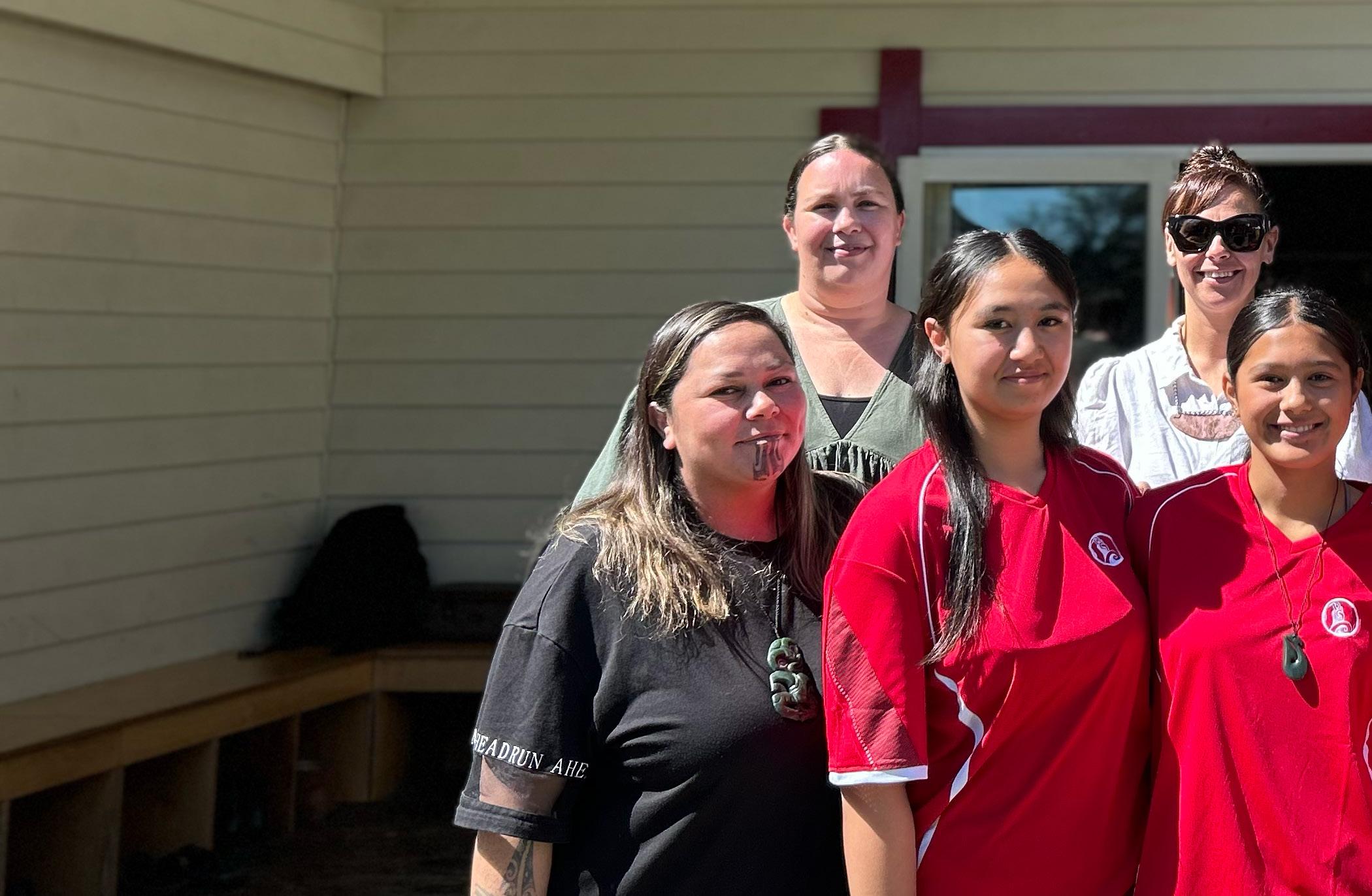


mairangatia te angitu!
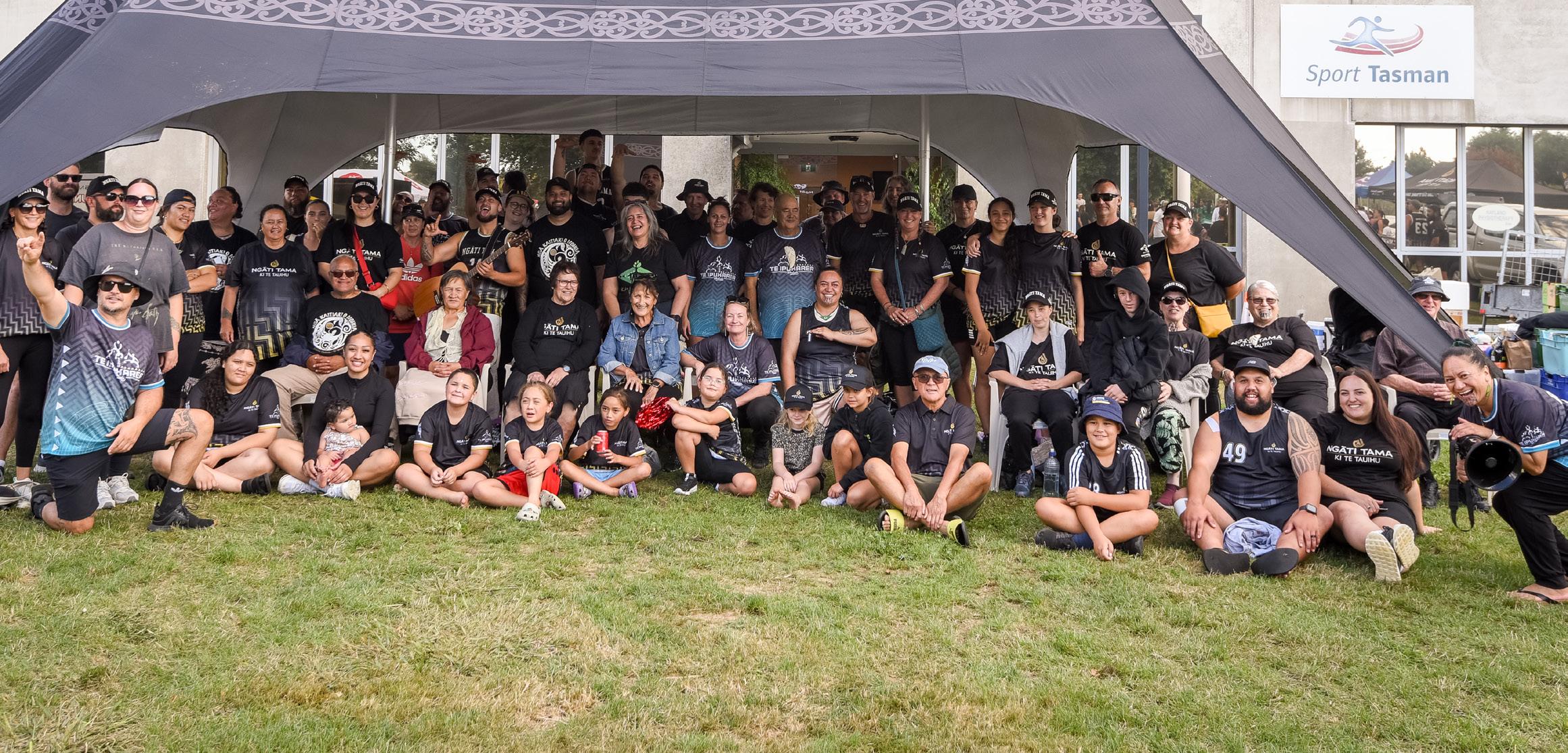























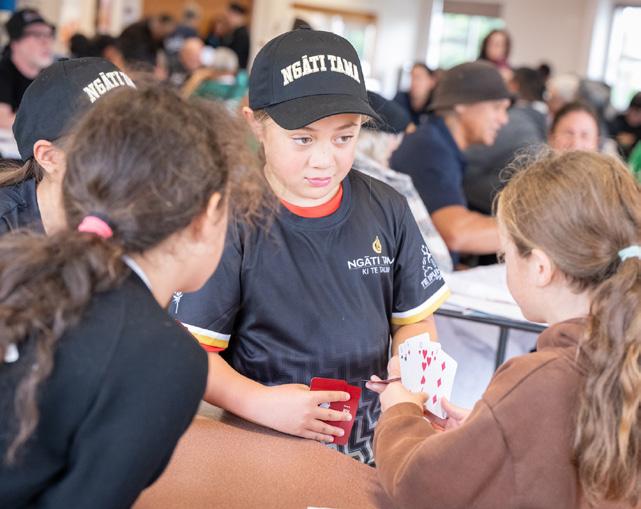


Here’s the latest on this important kaupapa to hold the Crown to account to make good on the Nelson Tenths.
Kia ora e te whānau,
The purpose of this pānui is to provide you with an update on Te-Here-ā-Nuku | Making the Tenths Whole and in particular the Government’s response to this kaupapa in the 2025-2026 Budget.
Last month, the Government made its Budget 2025 announcement.
The litigation that is underway against the Crown (Te Here-ā-Nuku | Making the Tenths Whole) was factored into two Budget lines:
• Vote Tari Whakatau allocated $640,000 within the Budget for ‘the development and delivery of a Crown response to the Wakatū* litigation and any related proceedings.’ This is the remainder of a $3.6m multi-year allocation made in the previous Budget – money put aside by the Crown to continue fighting us in court.
• Vote Māori Development allocated $2.4 million within the Budget for ‘Crown settlement costs as part of the Wakatū litigation’. We believe this is the amount awarded for costs following our win in the High Court in October 2023.
From what we can see, no money has been allocated by the Crown in this Budget to realise its legal obligations and resolve the case in line with the High Court’s 2024 decision, which made clear that the Crown has a significant financial and legal obligation to meet.
A fiscally responsible Government needs to account for this in the Budget, and the Government’s continuing inaction is unacceptable.
We have written again to the Attorney-General urging her to meet with us to discuss a pragmatic resolution to our case and thus avoid further and ongoing litigation at the expense of the taxpayer and of our people.
*Please note, the government continues to describe this matter in its budget as ‘Wakatū litigation’ despite Wakatū not being a party to the litigation since 2017 when the Supreme Court decided that Wakatū did not have legal standing to continue as a party. Wakatū Incorporation funded the litigation until a new funding agreement was reached at the beginning of 2025, and Wakatū via a significant number of its shareholders who are also beneficiaries of the Nelson Tenths’ Trust, remains inextricably connected to this kaupapa.
In October 2024, the High Court issued its interim decision. We won on almost all of the legal points that were argued. In order to issue her final decision, the Judge asked for further information regarding specific areas of land and economic valuations in the Nelson region.
The information required is detailed and providing this to the Court has been a core focus of work since the beginning of the year. We are nearing the end of this process, and expect to receive the final decision in the next few months.
If you would like to read the High Court interim decision you can find it and other information on Te Here-ā-Nuku website in the resources section.
All whānau are welcome to join our second short, informal online hui next month.

Wednesday 30 July, 7.30-8pm Online via Zoom Zoom link to come
In this hui, we’ll talk briefly about the origins of the Nelson Tenths and the objectives of the litigation. We will also outline the key findings of the Supreme Court and High Court to date. This kōrero will be followed by a Q&A session, with questions submitted via the chat function to allow as many whānau as possible the opportunity to take part.
30 July 2025Online hui for whānau
Latter half of 2025
Final decision expected from the High Court 20 April 2026
Start of five-day Court of Appeal hearing, Wellington
Contact and Connection form
Te Here-ā-Nuku | Making the Tenths Whole is a commitment to hold the Crown to account to return the trust property owed to the customary owners of the Nelson Tenths Reserves (the beneficiaries) and to compensate them for losses caused by the Crown’s breach of legal duties for almost 180 years.
An important part of our mahi is finding and reconnecting whānau who whakapapa to the Nelson Tenths whenua and empowering them to learn more about their whakapapa and history. We are building a contact database for this purpose.
If you haven’t already done so, please complete our Contact and Connection form to receive updates on the ongoing work to resolve this matter.
Contact and Connection form
If you have any pātai please contact us at: info@makingthetenthswhole.co.nz
Thank you for your support, Te Here-ā-Nuku Working Group

He Hononga ki te Whenua, He Hononga ki te Whānau
Ngāti Tama, in partnership with Wakatū Incorporation, recently came together as a whānau to create a meaningful opportunity for our rangatahi to attend the wānanga kōhine which was held from 25 to 29 September 2024. This special wānanga was grounded in the kaupapa of reconnecting our kōhine to their ancestral whenua in Te Tauihu, offering a marae-based and taiao environment rich with learning and discovering.
Set within the beauty of our whenua, the wānanga included haerenga into Abel Tasman National Park where we stayed at Bark Bay and Anchorage hut for two nights. These excursions were more than just adventures — they were moments of reconnection, where our kōhine walked in the footsteps of tūpuna and strengthened their sense of belonging.
The kaupapa of the wānanga supported our rangatahi holistically — fostering leadership, engaging in cultural practices such as waka ama and waka hourua, performing waiata and haka,
exploring whakapapa, learning mau rākau, and opening doors to future career pathways. Hiking through our taiao became a metaphor for their own journeys — filled with challenges, growth, and inspiration.
As a whānau, we celebrate their voices and journeys.
https://vimeo.com/user185989254/tekohine


Tēna koutou katoa
Ko Tyler Tapiki tōku ingoa
I te taha o tōku māmā
Ko Taupiri me Hikurangi ōku maunga
Ko Waikato me Waiapu ōku awa
Ko Tainui ko Horouta ōku waka
Ko Hukanui me Hinerupe ōku marae
Ko Tainui me Ngāti Porou me Ngāti Tama ōku iwi
Ko Ngāti Wairere me Te Whānau o Hinerupe ōku hapu
Ko Rameka Te Ketu tōku tupuna o Ngāti Tama
Ko Amanda tōku māmā
I te taha o tōku pāpā
Ko Ngā Puhi me Tūhoe ōku iwi
Ko Dwayne tōku pāpā
"Ki te kotahi te kākaho ka whati, ki te kāpuia e kore e whati.”
WE STAND ALONE WE ARE VULNERABLE BUT TOGETHER WE ARE UNBREAKABLE.
What was your knowledge on Te Tauihu/Ngāti Tama before attending the Kōhine wānanga?
Prior to attending the Kōhine wānanga and coming to Whakatu, Nelson I didn’t really know much about Te Tauihu/ Ngāti Tama. We have only recently been made aware of my great Nan’s connection to Whakatū.
What was your favourite part of the wānanga?
My favourite part of the wānanga was going down to the beach for a swim and collecting oysters, mussels and shells. Meeting whanaunga who became my friends was also another favourite part of the wānanga.
What were your learnings from the wānanga?
The time I spent at our wānanga I learnt a lot of waiata and how to do the long poi. Being able to see and be present where one of my tūpuna are from.
Who inspires you and why?
My family are my inspiration because they provide me with guidance and support with anything that I want to achieve.
What are you passionate about?
My passions are sports, whānau, friends and kapa haka.
What is a whakataukī you live by?
Ko te whakataukī e ora nei ahau, “Ki te kotahi te kākaho ka whati, ki te kāpuia e kore e whati.” We stand alone we are vulnerable but together we are unbreakable. This whakataukī reminds me that there is strength in unity.
What kind of tupuna do you aspire to be?
I aspire to be a tupuna who ensures the continuation of our whakapapa knowledge. A kaitiaki of our ancestral stories, traditions, and values, and passing them down with integrity and respect. By being a role model in everything I do, I hope to inspire and empower the next generation to embrace their heritage, understand their identity, and contribute positively to the world around them.

relevant or significant to each Iwi.
Who inspires you and why?
Te Arikinui Kuīni Ngā Wai Hono i te Pō is my inspiration. She inspires me because she is a confident, beautiful, Māori wahine leader. She is supportive, kind, and an amazing role-model.
What are you passionate about?
I am passionate about netball and love playing because it keeps me fit while I am having fun. The game itself makes me happy because it is never ending . When I watch netball I learn new tricks, plays and more things about the game. With this I get to meet many people young and not so young, that enjoy similar passions as me.
What is a whakataukī you live by?
Tūwhitia te hopo, mairangatia te angitū! - Feel the fear and do it anyway. I really like this whakataukī because in times when I am challenged in something new or hard, this helps me to push through to achieve positive outcomes.
What kind of tupuna do you aspire to be?
I hope to be a tupuna that is remembered for leadership and resilience. I aspire to be a tupuna like Te Puea Hērangi, who spoke out for what was right even though she didn't have many people behind her at times and she stood her ground.
Ko Ngāti Tama te iwi
Ko Whakatū te marae
Ko Arihia Kauhoe te tūpuna
Ko Lola Jade Fau tōku ingoa
"Tūwhitia te hopo, mairangatia te angitū! "
FEEL
THE FEAR AND DO IT
ANYWAY.

21 - 23 MARCH | 2025 | TĀKAKA
Held to support and grow Ngāti Tama uri to uphold roles such as kaikōrero and kaikaranga on our marae.
BY JAY MARTIN
From Friday 21st March – Sunday 23rd March in Tākaka we gathered once again for our second wānanga paepae — a continuation of our commitment to strengthen and uphold the legacy of Ngāti Tama on the marae.
Building on the momentum of our first wānanga, this hui deepened our shared learning and further developed the skills needed to s ustain our paepae into the future.
With returning faces and new participants, the wānanga created a supportive space for whānau to grow in confidence, reconnect with tikanga, and refine the roles of kaikaranga and kaikōrero within our unique Ngāti Tama context. Jay Martin writes about her experience over the weekend.

Ko Taranaki te maunga
Ko Mōkau te awa
Ko Tokomaru te waka
Ko Pukearuhe te marae
Ko Ngāti Tama te iwi
Ko Te Kaeaea tōku tūpuna
Ko Jay Martin tōku ingoa
Ko te mea tuatahi, ka nui te mihi ki a koe, te kaiwhakahaere o te wānangā nei, ko Jazz. Tēnā koe i tō mahi nui. Otirā, ki a kōrua, ki a Rangimōkai kōrua ko Ruakere, nā kōrua i whakatakoto ngā tūāpapa o ngā mātauranga nui. Ka whakamihatia kōrua e mātou katoa.
Tēnā kōrua, tēnā kōrua, tēnā kōrua.
When I started learning te reo 7 years ago, I needed a big, whānau- centred goal to help me stay in the reo-waka through ‘ngā piki me ngā heke’, the ups and downs of language learning as an adult. I decided I would only speak te reo to my mokopuna (who are not yet born) and to try and revive tikanga lost from my whānau two generations ago. This goal helped nudge me along to the Wānanga Paepae when encouraged by some of the Tama whānau in spite of my anxieties… (‘would I be dropped in it and have to karanga solo? … I don’t know enough tikanga…I’ll look stupid…’). Like every other time I’m in these situations and scared, I remember that learning te reo, tikanga and now karanga is a privilege that my Mum never had. By humbly stepping forward, we ensure our tamariki and mokopuna are raised surrounded by te reo me ōna tikanga.
It’s also part of living out Tama Tū ki Te Tauihu, Tama Ora ki Te Ao. When we practice our tikanga, growing our ability in karanga, whaikōrero, waiata, karakia… we can stand confidently as Tama in Te Tauihu, as well as flourishing collectively and individually in the wider world, confident in our tuakiri Māori.
We gathered in Rototai beside the moana on a warm, calm March evening as Onetahua Marae was unavailable. Following a delicious kai we opened our time with karakia and whakawhanaungatanga. Each morning karakia was held, greeting the sunrise and settling our wairua for the day ahead. Saturday was full on with a content-rich session from Rangimōkai focused on the process prior to a pōwhiri starting. We then convoyed up to Pūponga to support Health Post Nature Trust (HPNT) in a whakatau. This provided an opportunity to practice some of our learnings through karanga, karakia and waiata. HPNT greatly appreciated our presence as mana whenua.
Mātanga reo, Ruakere Hond arrived on our return and as expected we entered full immersion te reo. His session on structuring a mihi using aspects of the taiao combined with te reo language features like opposites or similies was profound. A new world of expression for mihi opened up for me through learning this simple framework. What a highlight, soaking up tō tātou reo rangatira and our Taranaki dialect. Thank you so much Ruakere for sharing your mātauranga with us.
Other expectations prior to the weekend were whakawhanaungatanga as I wasn’t at the first wānanga and I’m am quite new to Te Tauihu. Connecting with Tama whānau in a smaller purposeful setting felt like a great opportunity to build relationships. I also anticipated some in depth teaching of structure and delivery of karanga and then practicing it-daunting!!! Still, shared vulnerability can deepen connections and foster kotahitanga.
All of my expectations were positively met and my fears settled. I felt truly welcomed into the Tama whānau within a nurturing space. Rangimōkai created and upheld a safe learning environment throughout—there was no being put on the spot. Ahakoa he wahine toa ia, he ngākau aroha tōna. The focus was instead on grounding us in the tikanga that underpins karanga. Only on the final morning did we wāhine go to the beach to tuku karanga simultaneously together— an incredible experience!
There were many highlights… my kete was filled by the pūkenga of our kaiako, Rangimōkai and Ruakere. Rangimōkai’s skillful facilitation stood out, ensuring safety and calm from beginning to end. We learn best when not burdened by inner anxiety. A key learning was the preparation and communication that the kaikaranga undertakes prior to delivering the karanga. Also, grasping the full process and the why’s. The greatest highlight was sharing this journey with Tama whānau.
He nui tōku ngākau whakaute mō koutou katoa, ngā mihi maioha ki a koutou.
"Toitū te kupu, toitū te mana, tōitū te whenua"

ABOVE: Te kōpū hei rongo ki te manawa ō ōku

Ngāti Tama, Ngāti Toa, Te Whānau a-Apanui, Tuhoe, Ngāti Awa
MASTER OF FINE ARTS | WHITELIFFE COLLEGE

Ko Horoirangi te maunga
Ko Wakapuaka te moana
Ko Paremata te hapū
Ko Wahapiro Paremata rāua ko Ngamianga ōku tūpuna
Ko Ngawaina Paremata rāua ko Hanikamu Te Hiko ka heke
Ko Waepiti Te Hiko rāua ko Te Kauwhata ka heke
Ko Wi Mekerei Mātenga rāua ko Te Oti Matiaha ka heke
Ko Wikitoria Mātenga rāua ko Murray Wharewera
Ko Keita Wharewera rāua ko Jonothan Ballard ōku mātua
Ko Māia Wharewera-Ballard ahau
"My whānau are my biggest inspiration, I grew up wanting to know the importance and deeper meanings behind the things we do as Māori."

Kia ora e hoa, can you start by telling us a bit about yourself and what led you to the arts?
I was born and grew up in Whakatāne, Bay of Plenty. I spent most of my time in art class at high school and was referred to Whitecliffe College by one of my teachers. I left high school in Year 12 to then pursue arts. In 2015, I moved to Tāmaki Makaurau to study Bachelor of Fine Arts at Whitecliffe
College of Arts and Design. Through Covid I completed my first year of Masters of Fine Arts. Then I moved home to birth my baby. In Mei 2025 I graduated with Masters of Fine Arts with first class honours and received the top award. I am currently working as an arts preparator at Te Kōputu a te Whanga a Toi, Whakatāne library and galleries.
Your mahi centres around mātauranga Māori within social and cultural spaces. How do you describe that kaupapa in your own words?
It is about whakapapa to place, space and time, tikanga Māori, whanaungatanga, manaakitanga, kaitiakitanga, the layering and richness within Māori spaces.
My whānau are my biggest inspiration, I grew up wanting to know the importance and deeper meanings behind the things we do as Māori. The connection between processes and the whenua we do it on. Social and cultural spaces refer to marae, homesteads, pā sites, or any whenua we interact and tikanga Māori is present that maintains our relationships to each other and the land.
What was it like choosing a career in the arts and studying at Whitecliffe College? Did you face any struggles, being Māori in the arts – what was the environment like?
I was very lucky when I entered Whitecliffe, as there were about five Māori in my cohort at the time. It was hard making contemporary Māori art especially during critiques where others might not have had an understanding of Te Ao Māori concepts. We came together as a group and were able to uplift each other and share advice. The environment was very supportive as tikanga Māori was implemented into the programme by our tutors. Some even going on to learn te reo, so they could understand and support us. Whitecliffe provided Māori supervisors who could guide your practice and help you along the way.
I struggled at first as my identity was tied to Whakatāne as it was all I knew, having moved away from home at 17 years of age. As I came from a small rural predominantly Māori and Pākehā community, when I came face to face with multiple cultures, who questioned some of my cultural practices, it made me want to understand the deeper meaning into our processess and why they were important. I never had to think about that before, so I delved deeper and had many conversations with people that I used as research through my Bachelors and Masters thesis.

What kinds of kōrero came out of your mahi? Did those conversations with whānau and community shift or strengthen your sense of identity?
I asked my whānau questions centred around what whakapapa meant to them, how they grew up and what being Māori means to them. Many of the answers in these conversations centered around their connection to the whenua, through interacting with their elders and the knowledge they gained from those experiences. These conversations strengthened the ties I have with my whānau and whenua, it was about the memory that the land holds of our interactions on it.
How has Te Āo Māori inspired you in your art?
Our tikanga, pūrākau and whakapapa is what my mahi was tied to. The creation of Hineahuone has the biggest influence on my practice as a mother. This was all closely tied to language and whilst upholding our practices, reinforcing manaakitanga through relationships and presence.
During your journey, how did the grant support you received from Ngāti Tama help make your studies and mahi possible? It helped me buy supplies to make my installations and support my travel to Tāmaki Makaurau during my Masters. I wouldn’t have been able to do my studies without the support.
As a wahine Māori artist, what do you hope your work contributes to the next generation of Toi Māori?
The mahi I put into the world is for Māori. I love that we can celebrate each other through mahi toi and make connections to each other no matter where you are from. I hope to add to that value and help others on their journey of exploring their own whakapapa and what that might mean for them.
What’s next for you? Are there future projects, dreams, or spaces you’re excited to explore?
I am very lucky to be in the collective Tapa Moana nui. Doron Semu and Amy Korenhof have taught me about tapa/aute and I have been interacting with this material since 2022. I have made pito ties for māmā and other pieces with aute and kōkōwai so I am excited to keep exploring the use of this material and expanding my practice to incorporate aute more.
What has been the most memorable moment so far in your artistic career?
I was in a group exhibition with my friends “Toitū te moana” in 2022 at Tautai based in Tāmaki Makaurau. This show included four incredible wāhine, Kahurangi Ariki, Atareta Black, Te Ara Minhinnick and Lanae Cable. This show was an embodiment of mātauranga that came from our tūpuna and the connection as tangata whenua and tangata moana. We sat and discussed our concepts through Zoom over a year and came together at the end to put together a beautiful exhibition. For this show I produced the work “Te kōpū hei rongo ki te manawa o ōku tīpuna (We exist in our grandmothers wombs)” This was about my daughter's journey into Te Ao Marama much like the construction of Hineahuone and tikanga practices of whenua ki te whenua. This whakapapa is important to how I will teach my children about our creation.
Lastly, what advice would you give for Ngāti Tama whānau who are thinking about stepping into the world of toi or higher education?
I believe Māori are kinesthetic learners, and toi allows you to do this through expressing the many elements of Te Ao Māori you portray in your chosen medium through arts. It is a rewarding career path that invites you into Māori spaces and other cultures to learn in depth korero to share with your whānau and community maintaining manaakitanga, it is more than just visual. What whakataukī inspires you?
"Kia whakatōmuri te haere whakamua."
I WALK BACKWARDS INTO THE FUTURE WITH MY EYES FIXED ON MY PAST.
25 FEBRUARY - 1 MARCH | 2025 | TARANAKI
Members of the eight iwi from Te Tauihu were part of the 60,000 strong crowd and performers represented at the Te Matatini earlier this year. The festival was hosted by Te Kāhui Maunga iwi from the Taranaki and Whanganui regions in Ngā Motu (New Plymouth).
The biennial event was the largest festival to date, with up to fifty-five kapa haka groups and over 2000 kaihaka performing live to enthusiastic crowds, record online viewers and huge TV audiences.
The event began with an emotional pōwhiri highlighting the mantra of Parihaka of ‘peace and harmony’ as the over-riding theme of Te Matatini o Te Kāhui Maunga 2025. The theme song ‘We Belong’ was composed especially for the event and performed by Te Matatini and Corella featuring L.A.B.
Local Nelson group Te Kuru Marutea, tutored by Tom Alesana, won the People’s Choice with their waiata tira – choral piece ‘Kei Wareware i a Tātou’.
According to official reports, the festival contributed almost $24 million into the local and regional economy.
The hosts for the next Te Matatini Festival in 2027 will be Waikato - Tainui.
Te Kuru Marutea Wins People's Choice Award at Te Matatini
Nelson-based kapa haka group Te Kuru Marutea has made history as the first recipient of the Kōhine Pōnika ‘Aku Mahi’ Memorial People’s Choice Award at Te Matatini o Te Kāhui Maunga. Their powerful performance of Kei Wareware i a Tātou captured the hearts of audiences and went viral on social media.
The waiata, composed by Mākere Ngāropo Hati and Charlton Te Wake Matthews, was created to support the Panguru community during a time of mourning. Te Kuru Marutea’s moving rendition resonated widely, earning them the inaugural audience-voted honour. Among the performers were two whānau members Te Pūoho Stephens and Hāpai Cameron of Ngāti Tama, proudly representing Te Tauihu on the national stage.
Toitū Te Tiriti! Toitū Te Reo! Toitū Te Matatini!



https://www.youtube.com/watch?v=jLTwgl8_2H8 https://www.teaonews.co.nz/2025/03/10/behind-the-viral-waiata-composers-react-to-te-kuru-maruteas-rendition/
25 FEBRUARY - 1 MARCH | 2025 | TARANAKI
Ka karanga Te Kāhui Maunga ki te whakanui i te kaupapa o te pōwhiri ki Te Matatini.
On receiving the call to join with our whanaunga as part of Poi Manu rōpū to welcome Ngā hau e whā in Ngāmotu for Te Matatini gave us in Te Tauihu an amazing opportunity. This involved attending many practises, video reviewing and calls online. As a kapa haka buff this gave me a unique opportunity to perform with my daughter, honour my mother’s whakapapa and share the wairua that this journey brought to all that culminated in participating in the pōwhiri. Over 300 whānau members of Te Kāhui Maunga were on the field to welcome Te Arikinui Ngā Wai hono i te Pō and the 55 groups who came for Te Matatini.
To be part of Poi Manu in itself was an amazing experience, learning its history, whakapapa and tikanga that guides the kaupapa. The wairua that flowed on the day made it a magical experience regardless of the aches and pains afterwards. It was a once in a lifetime experience and such an event that took place that day will never happen again in my lifetime.
The idea to establish our own Poi Manu in Te Tauihu coming from the rōpū who participated in the event is the ultimate but one that has yet to be realised.

Poi Manu has a whakapapa within Te Ātiawa and Taranaki, of particular significance. It is a vehicle for karakia, stories, genealogy and history and for remembering the painful history such as land loss and carries the oral narrative of struggle for identity and justice transmitted to successive generations. The words of the poi presented at the pōwhiri gave an amazing oral history, linkages of the spiritual realm to the physical realm through time and place using the poi as the orator of the kōrero. Was it worth participating? Absolutely even with the consequences of the long practises and 20 minutes doing the poi for the pōwhiri. An incredible moment in history that I was privileged to be a part of.



On Monday, the 24th of February 2025, my Māmā and I stood together in a moment that will forever be etched into my wairua. Te Kāhui Maunga put the karanga out to all Taranaki whānui across the motu, and we answered that call. What began as a training journey with eighteen of us in Te Tauihu became, in the end, just the two of us standing on that grass in Taranaki, amongst three hundred whānau. A mother and daughter, bound not just by blood but by the echoes of generations before us.
For Mama, this was a return - she had performed in Te Matatini in both 1990 and 2000, then alongside my sister. For me, it was my first and only chance to stand beside her, to perform as one, to weave our histories together in this sacred ritual. This was my last opportunity in her lifetime to feel the rhythm of her presence beside me, to honour our whakapapa through poi manu, and in Taranaki - the whenua of our whakapapa.
It was not an easy path. I had to confront my own trauma, unearth the fears buried deep within me, and overcome the limitations my body had carried for years. At eleven, I broke my wrist, a wound that never healed correctly. It kept me from pursuing kapa haka beyond school, making poi feel like an impossibility. At seventeen, a car accident altered my life even further, forcing me to relearn how to walk and to live with invisible conditions that still and will always shape my days.
But for this - this one moment—I refused to crumble. Through sheer perseverance (and painkillers), I reclaimed my ability to move, to perform, to wield poi with pride and strength. My motivation was singular: to stand beside my Māmā, to be present in this historic moment.
The Poi Pōwhiri lasted twenty minutes, alongside eight other waiata learnt for the day, but the preparation spanned nearly eight months of relentless training, countless hours, aching muscles, and immeasurable dedication. We are still recovering, our bodies carrying the weight of what we gave, but our spirits remain full.
Poi Manu is a sacred ritual, born from Parihaka. It is not kapa haka, it is something deeper, woven with karakia, history, resistance, and the mana of wāhine and tāne combined. And this was the first time Poi Manu had ever been witnessed on this scale—so many wāhine and tāne performing together, seen beyond Parihaka kaupapa, and, for the first time ever, televised and recorded.
We did not stand alone. As we moved, as our poi flew over our shoulders, we represented our tīpuna wāhine Māori from our whakapapa. We carried the weight of all Taranaki whānui in Te Tauihu and Te Waipounamu.
This was more than a performance. It was a declaration. A reclamation. A moment where history met the present, and I, alongside my Māmā, stood in the fullness of our ancestors’ strength.

Aramoana du Feu (right) with Shirleen Ngawhare (Hinewaiata).
Ko Taranaki, ko Maungatapu, ko Parapara ōku maunga.
Ko Pungaereere, ko Ōakura Matapu, ko Hangatahua, ko Mahitahi, ko Parapara ōku awa. Ko Kurahaupō, ko Tokomaru ōku waka.
Ko Taranaki Tūturu, ko Te Ātiawa, ko Ngāti Tama ki Te Tauihu ngā iwi.
Ko Ngāti Haupoto, ko Ngā Mahanga, ko Ngāti Tairi, ko Ngāti Haumia, ko Kaitangata ōku hapū.
Ko Te Pōtaka, ko Pūniho, ko Ōakura, ko Ōrimupiko, Ko Whakatū, ko Onetahua ōku marae.
Ko Whakaewa te māmā o Taringa. Ko Taringa te māmā o Mohikura. Ko Mohikura te māmā o Tararaumoa.
Ko ōku tūpuna wāhine o Ngāti Tama ēnei. Ko Tararaumoa te māmā o Peggy.
Ko Peggy Ngataiouma Whitton nee` Horo tōku kuia.
Ko Jane rāua ko Trevor du Feu ōku mātua.
Ko Aramoana Jane Whitton du Feu tōku ingoa.
Ko Whakatū ki Te Tauihu tōku kāinga.
Nau mai mā te takotako o taku poi ki
Te Matatini o Te Kāhui Maunga. He Kāhui Tupua, He Kāhui Wairua, Tākiri Tākiri Tākiri hei.


Ko Ngāti Tama ki Te Tauihu te iwi
Ko Te Wahapiro Paremata tōku tupuna
Ko Ingrid Urech-Reopeti (Parai) tōku ingoa
“He
aha te mea nui o te ao?
Ko te whakapono, ko te tangata, ko te whakaute."
What does whakapapa mean to you?
Can you please tell us a little about yourself?
My name is Ingrid Urech-Ropeti (Parai).
I was born in Switzerland and am the eldest of four siblings. My sister was also born in Switzerland, while my two younger brothers were born in Aotearoa New Zealand.
I currently reside in Porirua with my husband, and together we are proud parents of five children and grandparents to five mokopuna.
I am the daughter of Tira Wahine Parai of Ngāti Toa Rangatira and Ngāti Tama, and Johann Urech of Zofingen, Canton of Bern, Switzerland.
Who are the key figures in your whānau and what role do they play?
In my whānau, some of the key people are definitely my parents. My mum connects us to our Ngāti Toa Rangatira, Ngāti Tama roots—she’s always been a strong presence, staying humble, values, and resilience. My dad, who’s from Switzerland, brought a completely different perspective. He taught us the importance of working hard, strong knowledge, and being smart with money.
My husband, who’s Samoan, is also a huge part of the foundation of our whānau. He’s been a constant support, and together we’ve raised our children and are now helping guide our mokopuna. We try to pass on the values we grew up with.
And now, our kids and grandkids are stepping into their own roles. They each bring something special and are carrying forward the hopes and legacy of our whānau.
How do you maintain whānau connections across generations or distances?
Maintaining whānau connections across generations and distances involves regular communication, shared gatherings, and a strong focus on whakapapa. We stay connected through phone calls, video chats, and family events, while also using technology to share updates and celebrate milestones.
We encourage the younger generation to learn about their roots, cultural practices, and whakapapa to strengthen their sense of identity and belonging. These efforts help keep our whānau bonds strong, no matter where we are.
Who is someone in your whānau who inspires you and why?
Someone in my whānau who inspires me is Uncle Dr. Taku Parai. (Sounds weird when I say this out loud because to all of us he is Uncle Tuk) He has dedicated decades to serving our iwi and community through leadership roles across education, sport, and governance. His humility, strength, and commitment to kaupapa Māori have earned him national recognition in his hard work and studies, including Honorary Doctorate to Indigenous Elders/Knowledge Holders—Doctor of
Education (EdD) for Indigenous Knowledge and Development from World Indigenous Nations University, and most recently has been appointed an Officer of the New Zealand Order of Merit (ONZM) for his services to Māori, governance, and the community.
I’m also inspired by Bianca Elkington, who leads the Education and Employment Group at Te Rūnanga o Toa Rangatira. Her passion for Māori success and innovative thinking in education are helping shape a better future for our tauira.
Both Taku and Bianca reflect the values of service, leadership, and manaakitanga that I deeply admire.
What do you hope to pass on to the next generation?
I hope to pass on a deep sense of identity and pride in who we are and where we come from. I want my children and grandchildren to know their whakapapa, to feel connected to both sides of their heritage, and to carry the values of aroha, respect, and whanaungatanga in all they do.
It’s important to me that they stand strong in their culture, honour those who came before them, and continue to care for our whānau and community with heart and humility.
What is a whakataukī you live by?
A whakataukī I live by is this:
“ He aha te mea nui o te ao?
Ko te whakapono, ko te tangata, ko te whakaute."
What is the most important thing in the world?
It is faith, it is people, it is respect.
This reminds me that, no matter what we do in life, our relationships with others are what truly matter. It grounds me in the importance of whānau, community, and caring for one another. I strive to live by this every day—through how I treat others, how I raise my children and mokopuna, and how I serve and support my community.
What do you do for mahi?
And how did you get into that field?
I am an Onboarding Specialist for the NZ Post Business Sales and Marketing team. I was approached by a team leader who believed I would be a great addition to the team. My manager also thought I have strong customer communication skills and am a good listener. (Not too sure about the listening part. I have been known to sometimes be away with the fairies.)
Though I’m always striving to improve.
Ngāti Tama whānau gathered under the sun at Nayland Pool to celebrate our tamariki. There was fun, laughter, and connection. A day that brought together families from across the rohe to enjoy the water, share kai, and create lasting memories.
The highlight of the day was the manu competition, where our young ones launched themselves into the pool with daring bombs. With tamariki showcasing their best manu techniques in hopes of claiming the top spot. It wasn’t just about competition — it was about confidence, courage, and celebrating each other's efforts.
After the action, everyone gathered to enjoy a yummy kai, with favourites that warmed the puku. The laughter over shared plates, the buzz of excited tamariki, and the smiles from kaumātua to pēpi reflected the strength and unity of our hapori.
Ngāti Tama Tamariki Day is more than just a day out — it’s a reminder of our commitment to nurturing our young ones, strengthening whānau ties, and keeping our tikanga alive through Kotahitanga and Whanaungatanga.
A huge mihi to our whānau for an amazing day.

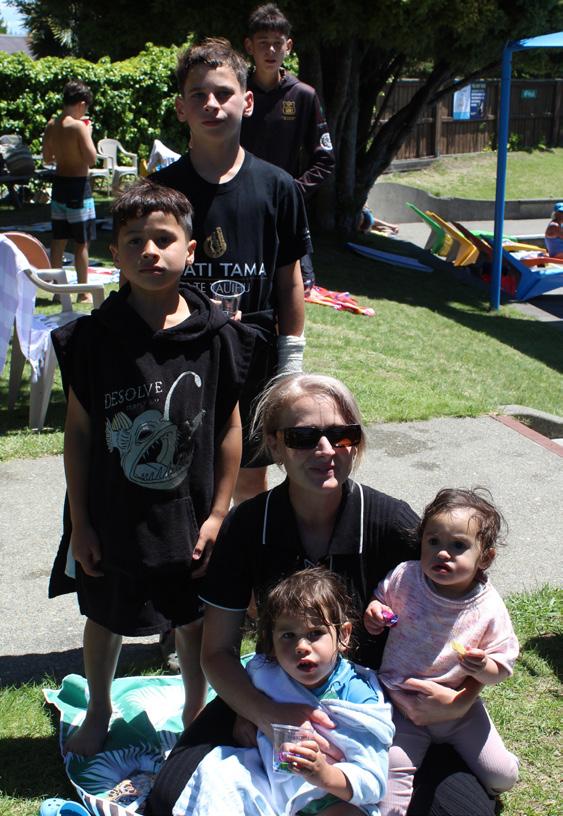





https://vimeo.com/user185989254/tamariki

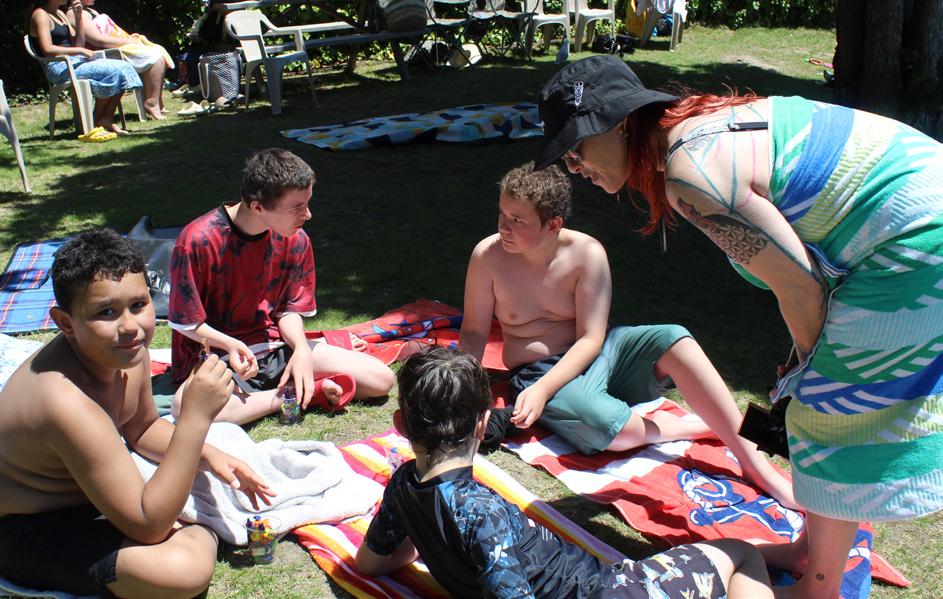
Ngāti Tama, in partnership with Tourism New Zealand, Mojang, Warner Brothers, and Māori-led creative agency Piki Studios, has helped bring the whenua of Rākauroa to life in the virtual world of Minecraft. This exciting project is part of a global campaign to promote Aotearoa New Zealand as a tourist destination, timed alongside the upcoming release of The Minecraft Movie, which was filmed right here in Aotearoa.
Rākauroa is one of six iconic locations from across the motu selected for inclusion in the free downloadable content (DLC) pack titled Aotearoa: New Zealand, now available in the global Minecraft Marketplace. The DLC gives players the chance to explore digitally recreated versions of these landscapes while learning about the culture and stories unique to each place.
Ngāti Tama worked alongside Te Ātiawa, Ngāti Rārua, and Piki Studios to ensure the representation of iwi and local stories in the game. We’re especially proud that our very own Te Pūoho Ki Te Rangi Stephens is featured as the Ngāti Tama character in this interactive experience, helping bring our narratives to new audiences through a popular and engaging platform.
If you or your tamariki are Minecraft fans, you can download the DLC by searching Aotearoa: New Zealand in the Minecraft Marketplace. It’s available across a range of devices including Xbox, PC, PlayStation, Nintendo Switch, and mobile (iOS and Android). To check out the game trailer, click the link below.
11 MAY | 2025 | RĀKAUROA



This collaboration is a powerful example of how tikanga Māori and storytelling can thrive in new spaces, connecting our whānau to the world through technology, creativity, and manaakitanga.
GAME TRAILER: https://www.youtube.com/watch?v=HnQXNmCWRxc



Ngāti Tama proudly steps into the digital world — partnering with Tourism New Zealand, Mojang, Warner Brothers, and Piki Studios to bring Rākauroa to life in Minecraft. With Te Pūoho Ki Te Rangi Stephens featured as our in-game character, this global collaboration showcases our whenua and whakapapa to the world through the magic of gaming.
LINK TO DLC: https://www.minecraft.net/en-us/marketplace/pdp?id=56b6dc49-a467-4df9-bcb3-743596444ffd
MINECRAFT MARKETPLACE: https://www.minecraft.net/en-us/marketplace

We recently farewelled two Ngāti Tama stalwarts, with multiple affiliations to other iwi of Te Tauihu and beyond.
Mākere Aroha Chapman passed on Waitangi Day and was farewelled at the Springston South Soldiers’ Memorial Hall near Christchurch.
The service was shared with members of Waitaha, close friend and celebrant Sarndra Fowler, and childhood friends from Springston as they recalled memories of growing up in the close-knit rural community.
Aunty Mākere was a vocal iwi supporter and a staunch advocate of te reo me ōna tikanga. Her ashes were interred at the Springston Lincoln Cemetery by her immediate whānau.

27 August 1947 - 6 February 2025


Judith Merenako Billens passed at the Coastal View Lifestyle Village in Nelson on May 12 where she’d been a resident for several years. Aunty Judi served on various boards in governance positions for many years, particularly in the health sector. She was awarded the Queen’s Service medal in 2015 for services to Māori and the wider community.
Following a public service held at Marsden House on Friday 16 May, Aunty Judi was farewelled in a private cremation.

9 July 1930 – 12 May 2025
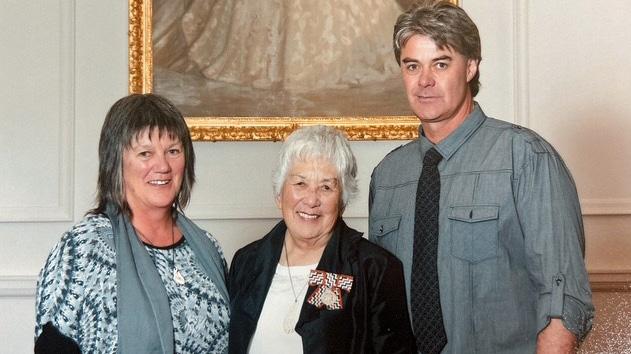

On a quiet country road, approximately 8 kilometres south of the rural township of Mataura in Murihiku (Southland), stands the ‘Tūtūrau Centenary Monument’. Strategically positioned on the Mataura River. Tūtūrau was a traditional travel route that connected Murihiku and Ōtākou. The wider Mataura area was also known as an important mahinga kai – food gathering place for local Ngāi Tahu hapū.
The memorial obelisk commemorates the 1836 battle between the forces of Ngāti Tama led by Te Pūoho ki-te-Rangi and Ngāi Tahu led by Tūhawaiki.
Despite reservations held by Te Rauparaha, Te Pūoho was determined to defeat Ngāi Tahu from the ‘tail to the head of the fish’. He led a taua (war party) down the West Coast, over the Haast Pass and through Central Ōtākou to Tūtūrau where he eventually met his demise.
His wife Kauhoe composed a waiata tangi to commemorate the passing of Te Pūoho ki-te-Rangi.
In December 1937, the centenary commemorations were conducted before a crowd of over 3,000 people. A carved whare was also dedicated and a 32 acre reserve was gifted to the Mataura Borough Council by the local iwi.

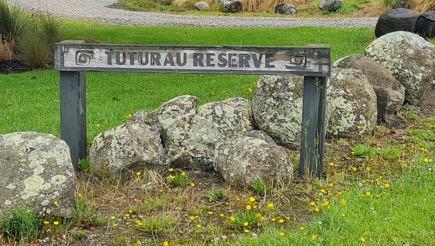

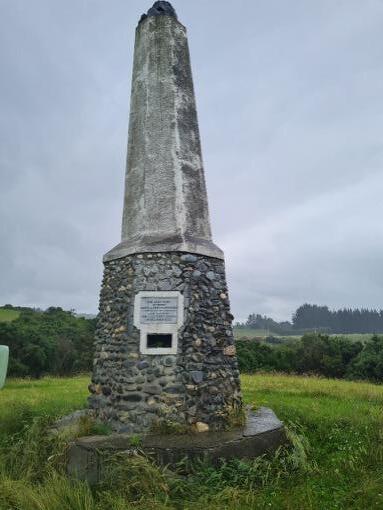
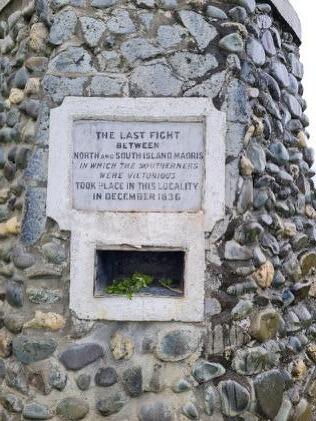
Reference: https://nzhistory.govt.nz/memorial/tuturau-maori-reserve-and-war-memorial
"Hei tohu maharatanga ki ō tātou tūpuna i hinga ai i te mura o te ahi. Moe mai rā koutou."

This past summer, Daisy Hawkins joined the team in the tari as our first intern. We asked Daisy to share her experience with whānau.
Thank you for the opportunity to be an intern over the 2024/25 summer period and for all of the support I was given over this time.
Throughout my time at Ngāti Tama, I hoped to achieve a better understanding of the aspirations of our iwi, and the work that is underway to achieve these goals. I also hoped to gain a better understanding of our history and identity.
In all honestly, I wasn’t sure what to expect coming into the intern position, however I was pleasantly surprised when I was met with fantastic support and complex but interesting mahi. Right from the start, I felt very welcomed by everyone at Ngāti Tama.
I understand that this was the first time an intern has been brought into the office, and there were many large and complex tasks that needed to be completed. Some of the work I undertook was similar to my university studies and some was completely new to me. I enjoyed the work and learning about new areas I was unfamiliar with. I appreciated the freedom and flexibility I had to undertake my work, which allowed me to think critically about how best to manage my time and my mahi. I do believe I could have optimised my time better if I had set targets. This is something I will implement in the future.
A benefit of the mahi is that I was able to figure out what worked best for me in terms of completing some of the tasks required.
In terms of my future aspirations, the internship has contributed significantly to widening my knowledge of iwi and indigenous businesses.
Throughout my time at University, I have been particularly interested in how best
to implement our values and ideologies into practice, in particular how best to protect our environment and community from the rapid advancements of technology and continuing colonisation. My career aspirations are to work in international and national security, and I hope to be able to contribute to my iwi in the future, particularly once I have more experience and expertise. I feel I have an obligation as a member of our iwi and as rangatahi, to preserve and strengthen our iwi through the work I do. I’m excited to see what the future has to offer.
Being able to help in the process of creating a website for our iwi to connect with their whakapapa and the stories of our tupuna was very meaningful work.
Additionally, having the opportunity to work alongside our kaimahi in a supportive office environment was very positive. A highlight of my time was visiting the Museum Archives and being able to view the original photographs and taonga, which belong to our iwi. I cannot think of one significant aspect which contributed negatively to my mahi. I am very grateful to have been given this opportunity.
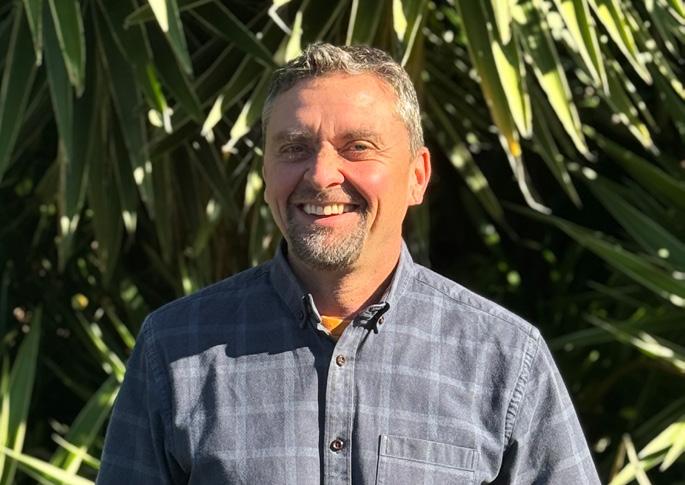
Last year we welcomed James Read to our tari as our GIS Implementation Support Partner. James brings a wealth of experience in geospatial systems and has hit the ground running, helping us build a GIS framework that supports everything from environmental monitoring to cultural storytelling.
James has been working closely with the team to develop tools that make our data more accessible and meaningful. Whether it’s updating maps for events like Te Ipukarea, supporting cultural health monitoring in Golden Bay, or liaising with agencies like LINZ and NZAA to manage property and archaeological data, James is helping us bring our
whenua and kōrero to life through spatial technology.
We’re grateful to have James on board and look forward to sharing the outcomes of his mahi with whānau in future.

Rangitāne, Ngāti Kahungunu, Ngāti Kuia, Ngāti Apa ki te Rā Tō, Te Ātiawa
We are pleased to announce the appointment of Joe Hanita as the new independent director of Tama Asset Holding Company. Joe brings a wealth of experience and a fresh perspective to our team, and we are confident that his expertise will be invaluable as we continue to grow.
Joe has over 20 years of financial and management experience having worked across public practice, the public sector (health and education) and multiple Māori organisations.
Joe is the Chief Executive Officer at Wakatū Incorporation and holds other governance roles with Te Ātiawa o Te Waka-a-Māui, Te Kotahitanga o Te Ātiawa, Rāngitane Tū Mai Rā
Investments and the External Reporting Board. His professional certifications include a Fellow Chartered Accountant (CAANZ), Chartered Public Finance Accountant (CIPFA UK) and a Chartered Member of the Institute of Directors New Zealand.
Joe is dedicated to using his skills for the collective prosperity of our iwi, hapū and whanau through thinking intergenerationally and by doing mahi that is aligned with our definition of value and wealth creation.
We look forward to his contributions and are excited to see the positive impact he will have on our company.
Tony Sewell INDEPENDENT DIRECTOR
TAMA ASSET HOLDING COMPANY


In February this year, after an impressive nine-year tenure, Tony Sewell retired as a director of Tama Asset Holding Company (TAHC). Tony's contributions to TAHC have left an indelible mark.
TAHC has benefited from his considerable property experience which included 21 years as CEO of Ngāi Tahu’s property group.
For TAHC, Tony's specialist property knowledge has been influential in building a robust and growing property portfolio. Over the past five years, TAHC has invested in property through the Hāpai property group (an Iwi-collective), where Tony serves as Ngāti Tama’s appointed director.
But Tony's retirement from TAHC doesn't mean he's slowing down. He remains active as the Chair of Generation Homes and is frequently sought after for property advice on new developments in the Canterbury area. Additionally, Tony plans to spend more time with his wife, Margaret, at their Hanmer property, where he is also involved with the Hanmer Springs management committee.
When Tony reflects on his time working on behalf of iwi, he recognises it is a trusted privilege and is thankful for the cultural learnings he has gained.
REFLECTIONS AND INSIGHTS - AS SENAE AND HOANI COMPLETE THEIR FIRST YEAR AS ASSOCIATE TRUSTEES, WE ASK THEM TO REFLECT ON THEIR JOURNEY AND SHARE THEIR INSIGHTS TO DATE.
Hoani
Tākao


Senae Mitchell ASSOCIATE TRUSTEE
What has been the most rewarding aspect of your time so far as an associate, and how has it impacted your perspective on the mahi that the Trust does on behalf of whānau?
My experience as an associate trustee has given me immense gratitude for our Whānau, Trustees and Kaimahi. I have witnessed the passion, the wealth of knowledge and humble leadership from around the table which has been inspiring. We have a very inclusive board, well-balanced with a common purpose to serve and do what is best on behalf and for the future of our people.
How have your interactions with other trustees and the management team influenced your approach to your responsibilities. What advice would you give to someone who thinks they may wish to do this in future?
All my interactions have been positive, welcomed with open arms, hearts, and minds, encouraged to share views on matters and I have felt heard. I have had the privilege to deep dive into kaupapa that can influence the future of our iwi, this is a shared responsibility which carried with the utmost respect and care. I encourage those who feel moved to take the opportunity to sit in the governance space to do so. Although it’s a safe and encouraged to share your views, when new to any space, know that it’s ok to just sit and observe, there are more learnings in listening than talking.
What has been the most rewarding aspect of your time so far as an associate, and how has it impacted your perspective on the mahi that the Trust does on behalf of whānau?
So far, the most rewarding aspect of my time as an associate has been the opportunity to develop a deeper understanding of board roles and responsibilities, particularly in the context of governance and strategic planning. Engaging in general meetings and strategic sessions has provided practical insights into how these roles translate into action, especially balancing being an iwi member and maintaining a board-level perspective. As a result, this experience has been both challenging and enlightening, offering an intense learning curve that has enriched my understanding of the Trust's mahi on behalf of whānau.
How have your interactions with other trustees and the management team influenced your approach to your responsibilities. What advice would you give to someone who thinks they may wish to do this in future?
Working alongside fellow trustees and the management team is a valuable learning experience. While formal meetings provide essential insights, I've found that one-on-one kōrero with individual members offer deeper understanding of their perspectives, experiences, and contributions. I'm also mindful that this learning journey is ongoing, and it's key to helping me keep improving how I approach my responsibilities.
My advice to anyone thinking about becoming an associate trustee is: Karawhuia! Give it a go. Be open to learning, take the initiative, and embrace the challenges that come with it. Remember, we all bring our own unique kete of knowledge, and together, we're here for the benefit of our whānau.
TAMA TŪ KI TE TAUIHU, TAMA ORA KI TE AO
Our place, our people, our destiny
Success will depend on each of our contributions
TŪ RANGATIRA - Courage, determination, growth
AKONA KIA TUPU - Learn, teach, evolve MANA TIAKI - Restore, protect, sustain AROTAHI AI TĀTOU - Collective, unified, inclusive

AHUREA
STIMULATE LEARNERS OF TE REO, TIKANGA AND WHAKAPAPA
AHUMAHI
DEVELOP OPPORTUNITIES TO LIVE AND WORK IN TE TAUIHU
AHUORA
EXPLORE OPTIONS FOR WHĀNAU WELLBEING AND INDEPENDENCE
AHUWHENUA
ENHANCE OUR SIGNIFICANT LANDS AND WATERWAYS
FIT FOR PURPOSE SYSTEMS AND OPERATIONS
Do we as an iwi with strong affiliations to Taranaki use the glottal stop, that is, do we use our dialect in speaking AND writing or not?
For example, how should we spell our city’s Māori name – WHAKATŪ?
Do we spell it how we pronounce it - as in W’AKATŪ using the glottal stop (written as an apostrophe for the missing h) to indicate our dialect? Or should we just spell it WAKATU?
The concern is that it lends itself to the likelihood of misinterpretation. eg...
waka – canoe
tū – vertical
Whereas the inclusion of the letter ‘h‘ should lessen the chance of that happening.
Whaka – causative prefix (causing something to happen)
tū – establish, set up, create Whakatū – the establishment of Nelson city.
I would strongly advise learners of te reo, to maintain the inclusion of the letter ‘h’ in the written word, knowing that in the spoken word it is dropped and replaced with the glottal stop. Learning te reo is difficult, therefore the use of dialect in spoken language should be considered as a refinement and attempted as one’s language develops. It should not be rushed.
Advocates of the reo, know that in most cases the generic Taranaki dialect involves the dropping of the letter ‘h’ occurs whether the word begins with or includes an ‘h’ or ‘wh’ as in the following words, phrases and names; mihi – mi’i - greet, acknowledge tohu – to’u - sign, symbol wehe – we’e - separate, leave haere mai – ‘aere mai - welcome, come here
whakarongo mai – w’akarongo mai - listen up, pay attention kuhu mai – ku’u mai - enter, come in Mohua – Mo’ua - yellowhead (bird)
Mahitahi – Ma’ita’i - working together & a species of whitebait
Waimeha – Waime’a - insipid water, tasteless
In Hawaii the glottal stop is called the ‘okina and the preferred spelling and pronunciation is Hawai’i. What’s interesting is that the letter 'w' is pronounced as a 'v' and the ‘okina in Māori represents a'k'. Therefore, they will spell and pronounce their name as Havai’i while we would spell and pronounce it as Hawaiki.
The peoples of Havai’i have been agitating for the official recognition of the ‘okina, for a number of years, yet to no avail. Given that the use of the glottal stop in Aotearoa is predominantly a matter of dialect, it would be more productive especially in Te Tauihu, to concentrate on the spoken word first to build up a strong community of speakers.
The added frustration in Te Tauihu is the misspelling of many local place names which creates confusion as to the ‘original’ names and their meaning. Some are gradually coming to the fore in the form of manuscripts and other historical documents. Further research however needs to be done in this area.
DEVELOP OPPORTUNITIES TO LIVE AND WORK IN TE TAUIHU

We encourage whānau to check out WhanauSaver by going to: kauruora.nz/savings/
CELEBRATING THE LAUNCH OF WHĀNAUSAVER: A NEW PATHWAY TO FINANCIAL WELLBEING
In November 2024, Ngāti Tama proudly supported the launch of the WhānauSaver programme alongside Ka Uruora, marking a significant milestone in our collective journey toward financial empowerment and intergenerational wellbeing.
Financial education is the first step to access our Ka Uruora housing opportunities. Our Financial Education wānanga cover everything from budgeting to mortgage applications. Sign up now so you are ready when the right opportunity comes along.
Our goal is to support our iwi whānau to access healthy housing and home ownership opportunities, as a pathway find that you’re closer than you thought to realising your dream of owning a home. Sign up for a financial education course now.
Grow your savings with WhānauSaver. Set yourself up for retirement, first home ownership or tertiary education with contributions from your iwi.

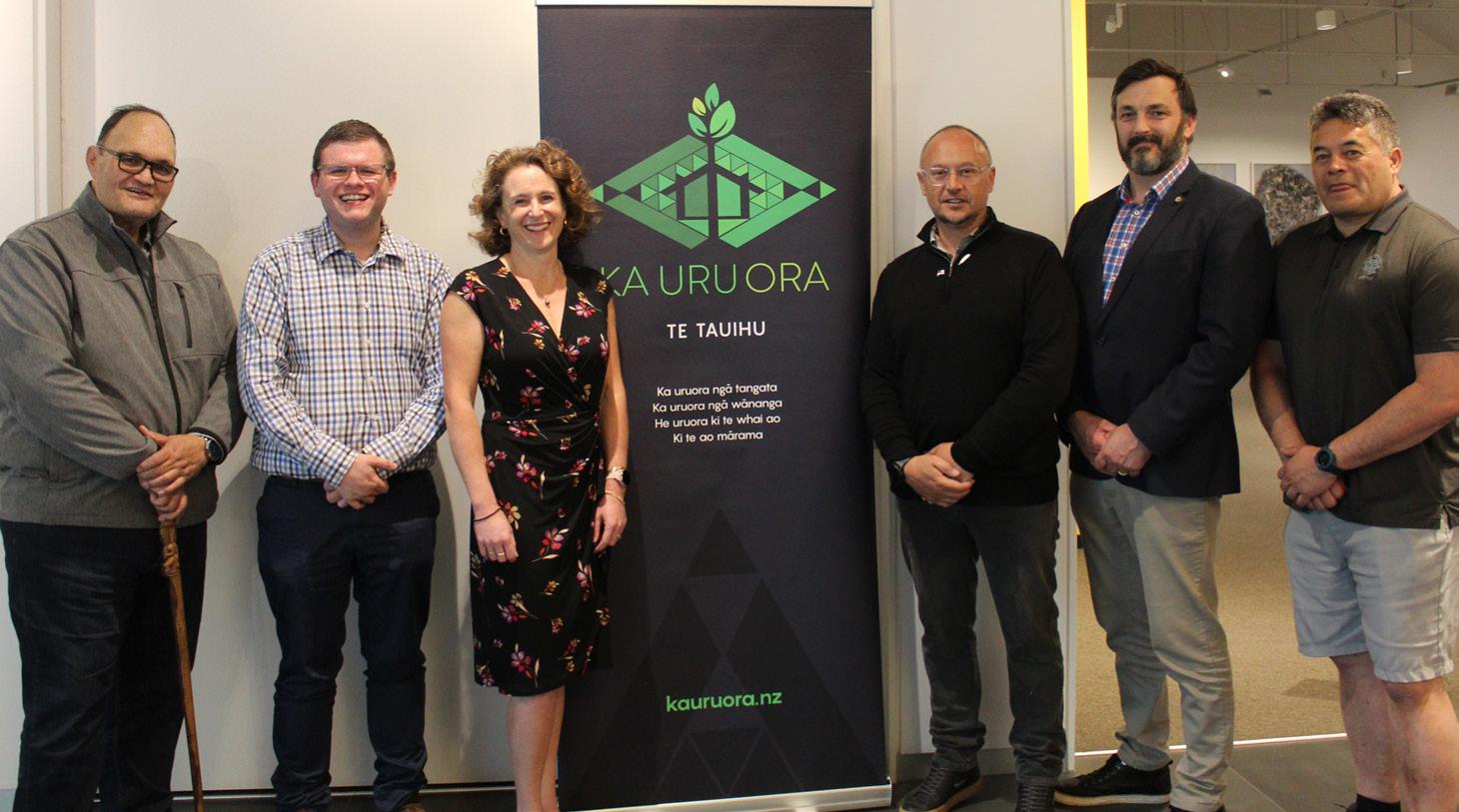











Housing Options
Where to start and what it all means
Money Systems
Setting goals and managing money
Plan for the unexpected Protecting what’s important including insurance, wills and trusts
Spending Money
What influences us, our attitudes and behaviours
Debts and your rights
Ways to reduce debt
Looking Ahead
Making a plan, identifying barriers and putting your plan into action
Money Plans
Using a budget as a tool to achieve your goals
Save Smart

Saving and investing, including KiwiSaver and HomeStart grants
Free
It won’t cost you anything to take part in Sorted Kainga Ora




Learn the steps you’ll need to take to own your first home. Budgeting, mortgages, deposits and lawyers can all seem overwhelming and out of reach, but with the right advice and some hard work, you might find that you’re closer to achieving your dream of owning a home than you thought.
Financial education is the first step to access our Ka Uruora housing opportunities. Our Financial Education wānanga cover everything from budgeting to mortgage applications. The following elements will be covered throughout the programme (see table left).
If you or your whānau are interested in attending a financial literacy wānanga, please register your interest with Debra-Lee or Quilla so you'll be ready when the right opportunity comes along. They will be in touch to arrange a date that suits you.
Debra-Lee: debra-lee@kauruora.nz
Quilla: quilla@kauruora.nz

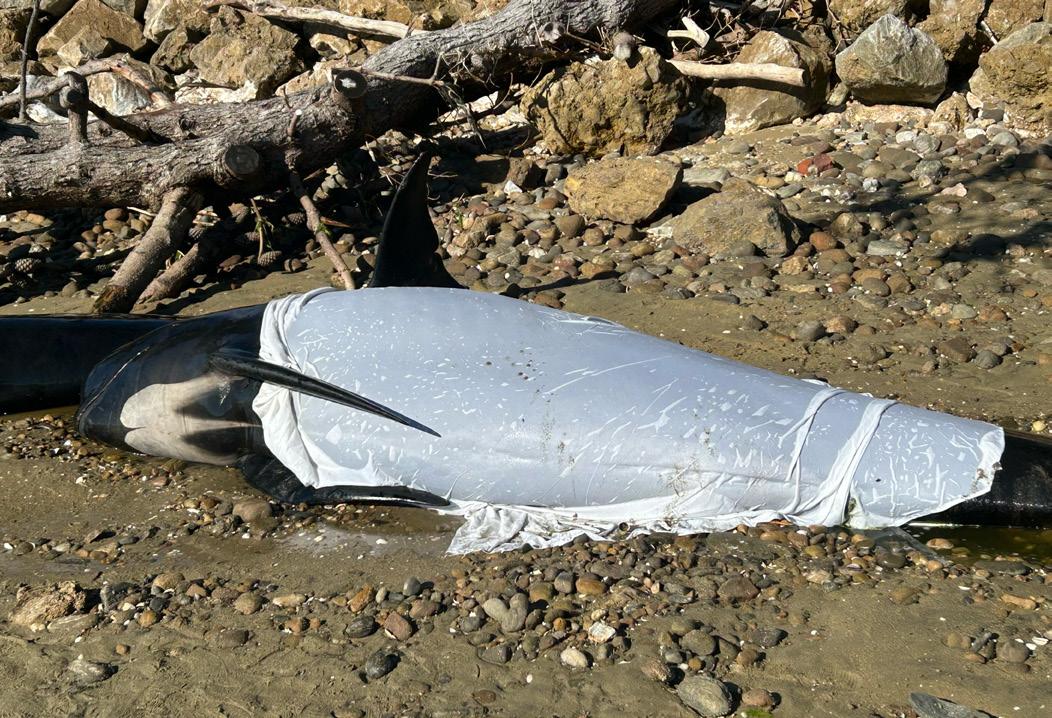

On January 20, 2025, the shores of Pākawau and Pūponga near Onetahua/Farewell Spit, became the site of heart-wrenching whale strandings. Over the course of the weekend, two separate pods of pilot whales—around 30 and 11 individuals respectively—stranded themselves on the beaches of Mohua.
The initial stranding occurred on the evening of January 18, when a pod of approximately 30 pilot whales was discovered near Pākawau Inlet. Despite immediate efforts by Department of Conservation (DOC) staff and Project Jonah volunteers to refloat the whales, many returned to the beach due to challenging conditions, including strong onshore winds and shallow waters. By Monday morning, the whales were stranded again high on the beach, some among rocks and driftwood, making rescue attempts increasingly difficult.
The response to the stranding was a powerful expression of kotahitanga—unity and collective purpose. Mana whenua, local whānau, DOC staff, community volunteers all stood together with a shared kaupapa: to awhi and protect the tohorā as best we could. Despite the remote location and the challenges of the tides and terrain, the spirit of mahi tahi— working together—was unwavering. Our whānau provided cultural leadership and conducted karakia and gave comfort to those tohorā that couldn’t be saved.
While the outcome was not as hoped, with many whales lost, many were saved, and we thank our whānau and the community volunteers for their unrelenting efforts. It is arduous mahi and without them, many more would have been lost.
Ngāti Tama and Manawhenua ki Mohua are co-developing a Cultural Health Monitoring Programme for Te Waikoropupū Springs and the Wharepapa Arthur Marble Aquifer—an initiative that places tikanga Māori and mātauranga at the heart of freshwater protection.
This mahi responds to the Te Puna Waiora o Te Waikoropupū Springs and Wharepapa Arthur Marble Aquifer Water Conservation Order (WCO), which recognises Ngāti Tama and Manawhenua ki Mohua as kaitiaki and requires the Council to give regard to our cultural health monitoring report when carrying out its duties. Over the past year, we have developed a framework that enables the collection and reporting of cultural health monitoring information.
What’s in the Framework?
The framework has been developed in close collaboration with whānau and Manawhenua ki Mohua. It includes:
• A tohu-based approach: Indicators of health are drawn from mātauranga Māori and whānau aspirations. These tohu include water clarity, presence of taonga species, and the state of riparian vegetation.
• Seasonal monitoring: The framework supports regular, seasonal assessments to track changes over time and build a long-term picture of the aquifer and spring system.
• Whānau-led monitoring: Ahi kā whānau are trained and supported to carry out the monitoring, ensuring the process is grounded in lived experience and local knowledge.
• Data systems: A digital system has been established to capture and manage the data.

Routine monitoring is now underway, and the first full report is expected later this year. This is a significant milestone in asserting iwi rangatiratanga over freshwater and ensuring that decisions about our wai reflect our values and responsibilities.
In addition to the Waikoropupū framework, Ngāti Tama is also developing our own cultural health monitoring framework within our Ngāti Tama cultural area of interest. This work revives earlier efforts from 2008 and 2018 and aims to reconnect whānau with their Whenua, Awa and Moana through hands-on kaitiakitanga.
The Ngāti Tama Cultural Monitoring Framework will combine qualitative and quantitative assessments of taiao. Whānau will determine the tohu that matter most—such as mahinga kai, water clarity, and species presence—and use these to assess the state of the catchment over time
This kaupapa is about whānau spending time on the whenua, sharing knowledge, and being active in restoring, protecting and monitoring our taiao together. It also creates opportunities for training and employment, and supports the revival of Ngāti Tama mātauranga in environmental management mātauranga Māori in environmental management.
HAVE YOUR SAY - We want to hear from you!
Please ready through our draft and send through your feedback to: taiao@ngati-tama.iwi.nz
https://forms.office.com/r/NgatiTamaCHI

Ngāti Tama continue to foster relationships with organisations who align with our values that support the aspirations of our whānau.
Through the support of Tasman Bay Guardians our whānau are involved in projects that enhance, protect and maintain our ecological responsibility by actively upholding kaitiakitanga.
One of these areas is educating our next generations on coastal marine conservation. Te Pūoho Stephens who is employed by Tasman Bay Guardians is leading the Love RimuRimu Education Programme focussing in our significant cultural areas within Rotokura and Horoirangi.
The programme dives into seaweed diversity and its importance in the marine environment. By engaging our rangatahi early in these activities we hope to instill lifelong values around marine protection and sustainability.
Te Pūoho has been running the programme with students from Te Kura Kaupapa Māori o Tuia te Matangi.


Felix G. Marx and Alan J.D. Tennyson - Te Papa
Fossils are a testament to the ancient history of life. Most remain hidden deep inside the Earth. Sometimes, however, nature reveals these taonga through water, wind, and weather, and offers us a chance to learn from them.
Mohua and its hinterland are home to a wealth of fossils recording over 500 million years of evolution. Over the past four years, we have had the opportunity to explore a part of this rich history along the coast between Kahurangi Point and Raukawa Stream.
In this area, erosion by the sea exposed the remains of two archaic dolphins and a penguin dating to 20-25 million years ago – a time when much of New Zealand was under water. Thanks to a joint effort by Manawhenua ki Mohua, DOC and Te Papa, we managed to collect these taonga to preserve them for future generations.
Now safe, the fossils are being carefully prepared so we can learn more about them. To do so, we use 'airscribes': a modified version of a pneumatically driven engraver's pen that chips small pieces of rock away from the bones. Once exposed, the bones are given a final clean and stabilised via reversible resin. This process can take months or years, and requires both knowledge of anatomy and protection from the hazardous dust. To ensure both, fossils at Te Papa are prepared by trained staff inside a purpose-built laboratory.
Preparation of the three fossils from Manawhenua ki Mohua's rohe is ongoing, but many interesting details have started to emerge.
The first dolphin, collected near Kahurangi Point in 2022, belongs to a small and rather young animal. Unlike its modern cousins, it had sharp, variably shaped teeth. Like them, it could probably 'see with sound', i.e. find prey and orient itself via a type of biosonar called echolocation. Unlike in modern dolphins, however, the tissues used for echolocation were small and poorly developed. Overall, the shape of the skull is remarkably archaic, and we are unaware of a similar fossil from anywhere in Australasia.
The second dolphin, collected near Raukawa Stream in 2023, was a different beast altogether. Much bigger and armed with robust teeth, this shark-toothed dolphin (also known as a squalodontid) was likely a much more fearsome predator. While we have yet to expose the skull, its teeth hint at an older individual with solid tooth roots. Strong wear to the tip of the teeth suggests biting on hard prey, which in turn was helped by large, powerful jaw muscles.
The penguin was collected in May this year and so far remains unprepared. From what is exposed, however, we know that it is a partial skeleton including the hip and several shoulder,


wing, and leg bones, as well as vertebrae and, perhaps, parts of the skull.
We will finalise the preparation of the first dolphin over the coming weeks and look forward to sharing the final result, and anything we might learn from it, with you soon. Ngā mihi to Manawhenua ki Mohua, DOC, the Tasman District Council, and local beachgoers for all the support. We feel privileged to be a part of this journey and are deeply grateful that you have welcomed us to this special part of Aotearoa.


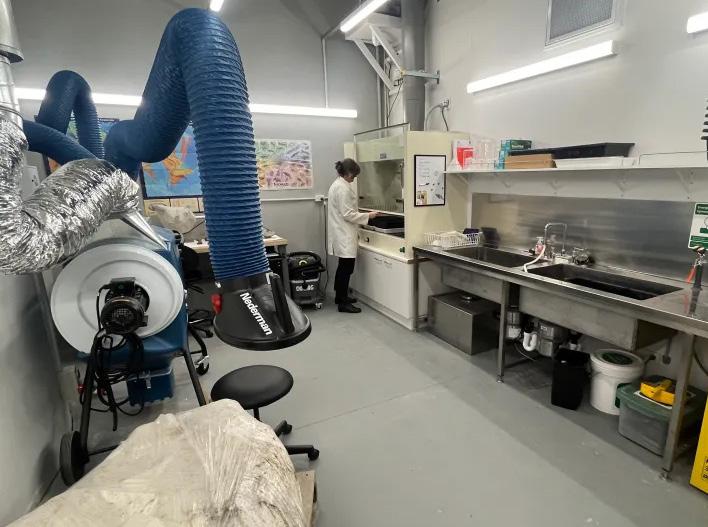
BOTTOM LEFT: Karakia and kōrero following the excavation of the shark-
BOTTOM RIGHT: The fossil preparation laboratory at Te Papa.

Te Tauihu-based student and emerging leader Tamu Mausii has been named the 2025 recipient of the NMIT Janice Manson Memorial Scholarship.
The scholarship, established in memory of Janice Manson, honours her enduring legacy as a passionate advocate for Māori visual culture and cross-cultural partnerships. Janice served on the NMIT Academic Council and was a resource teacher for Māori in the Nelson region for 15 years. Her influence extended beyond the classroom—she was a pivotal figure in iwi development, serving as Chair of the Ngāti Tama Trust during the critical period of settlement claim hearings.


Janice’s life was grounded in service to iwi and whānau. Her leadership, warmth, and vision are still deeply missed and fondly remembered by those who had the privilege to work alongside her.
Tamu Mausii’s selection for the scholarship reflects not only academic excellence but also a deep commitment to the kaupapa that Janice championed.
Tamu’s work and aspirations align with the values of cultural integrity, community upliftment, and creative expression that Janice held dear.


Ngāti Tama ki Te Waipounamu Trust provides assistance to whānau who are registered with us to promote and enhance social, educational, health and wellbeing, sporting and cultural opportunities of the iwi. TO FIND OUT MORE ABOUT OUR GRANTS PLEASE GO TO: https://ngatitama.nz/grants/
Kaiwhiwhi: Taarewa i-te-rangi me Te Koomuri Aroha
The following is a brief account of the cultural exchange to Canada and the United States during the Term 3 school holidays (Sept. 28 – October 13) taken by staff, students and parents from two Kura Kaupapa Māori. Namely, Mana Tamariki (Palmerston North) to which Taarewa and Te Koomuri are affiliated and Ngā Mokopuna (Wellington) Taarewa i te-rangi – 20 years (ex-student) Te Koomuri Aroha – 16 years (Year 11)
This excursion replaced the one that was cancelled in 2021 due to Covid. Taarewa was a Year 13 student at the time, with three other girls. All four were invited to join the trip this year but the other three were unavailable due to tertiary commitments.
Preparation for the trip began in late 2023 as the details of the invitation to resume the visits began to unfold. Meetings were held in earnest and a plan was hatched to make it a reality.
Mana Tamariki were no strangers to international travel and had been doing so with groups of senior students over a period of two decades.
Over the next eight months a series of fund-raising events and activities had been organised to assist with the logistics of such a huge undertaking, which would involve a group of approximately forty students and adults. The photo at the bottom of Page 42 is taken at Palmerston North Airport prior to departure. The rest of the team would be meeting us at Auckland airport prior to departure for Canada later that night. - Reflections overleaf.



Te Haerenga ki Kānata me Āmerika:
Tēnā koutou kei aku pahake o Ngāti Tama ki Te Tauihu. Tēnei te mihi ki a koutou i tautoko mai i a māua ko taku tuakana a Taarewa i tō mātou haerenga ki tāwāhi. I tīmata i te taunga rererangi ki Te Papaiōea i ō mātou whānau me ngā hoa. I tuku ngā mihi me te karakia i mua i tō mātou wehenga ki Tāmaki Makaurau. Ahakoa he 13 hāora te roa o te rerenga atu ki Kānata, he pai tonu. Nō te taenga atu ki Vancouver, he nui ō rātou whakairo, ā, he āhua rite, he rerekē hoki ki ō tātou. Ka moea te pō, kātahi ka rere atu ki te rohe o Saskatchewan, ki te tāone o Saskatoon me Te Whare Wānanga ki reira noho ai. He manuhiri mātou ki te huinga Pow Wow. He pai te kite atu i ngā pahake me ngā taitamariki e mau ana i ngā mai muramura nei, e kanikani ana. He nui ngā mea i kite ā-kanohi atu, i rongo ā-wairua mai. He mīharo, he ātaahua hoki.
Ka pau te kotahi wiki, ka wehe atu i Kānata, ka tae atu ki Ngā Anahera me ngā mea pārekareka ki au. I tae atu mātou ki ngā wāhi rongonui, pēnei i a Disneyland, i a Knotts Berry Farm, i a Universal Studios hoki. I tae atu hoki ki Te Whare Wānanga o UCLA hei manuhiri ki te Kura o Ngā Iwi Taketake. I reira mātou ka tūtaki i a Charlisse Leger-Walker nō Te Whānau a-Apanui, e tākaro poitūkohu ana mō te tīma o te UCLA Bruins. I te nuinga o ngā wāhi i tae atu ai mātou, i tū ki te whakangahau. He pai ki te hunga mātakitaki. I tae atu mātou ki ngā wāhi hokohoko, ā, he rawe ki au. He rerekē te moni ki Kānata me Āmerika. Ā tōna wā peange, ka hoki anō au ki tāwāhi. Nō reira, hei whakakapinga ake māku, tēnā koutou, tēnā tātou katoa. Nāku iti nei, nā Te Koomuri Aroha.
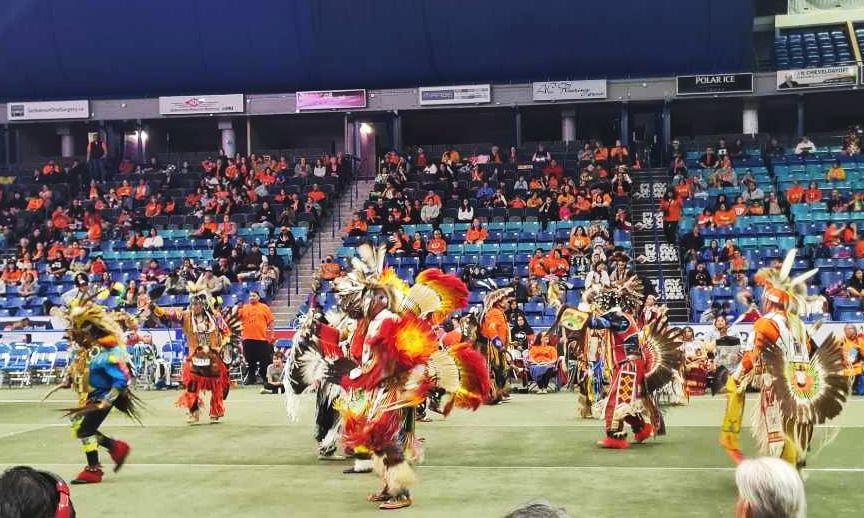
(Greetings to my elders of Ngāti Tama ki Te Tauihu. My sister Taarewa and I extend our sincere gratitude to you all for your support for our overseas trip. We began our journey at the airport in Palmerston North with our whānau and friends. We exchanged words of gratitude and ended with karakia before our departure to Auckland. Although it was a long 13 hour flight to Canada, it was worth it. Upon arrival at Vancouver airport, we saw many huge carvings, both similar and yet different to our own. We stayed the night and the following day we flew to the region of Saskatchewan, to the town of Saskatoon and stayed at the university. We were guests at the Pow Wow festival. I enjoyed watching the elders and the young children dancing in their brightly coloured traditional dress. We were treated to many awesome visual and spiritual experiences.
After a week, we left Canada for Los Angeles, where there were lots of exciting things to do. We visited many well-known places like, Disneyland, Knotts Berry Farm and also Universal Studios. We were guests at the Indian Studies Centre at the University of UCLA. There we met Charlisse Leger-Walker from Te Whānau a-Apanui who plays basketball for the UCLA Bruins. Most of the places we visited, we entertained everyone and were enthusiastically received. We visited lots of outlet stores which I really loved. The money in Canada and America is different. One day I hope to travel overseas again. Finally, thank you again for your continued support.)
With love, Te Koomuri Aroha

Kei aku huānga, tēnā koutou. Tēnei te tautoko ake i ngā kupu whakamiha a taku taina ki a koutou i tuku pūtea mai hei āwhina i a māua i tō mātou haerenga ki tāwāhi rā anō. Ko tōna tikanga kia haere au hei tauira i te tau 2021 engari, nā te mate kōwheori i whakakorengia. Nō reira, ko taku mahi i tēnei kaupapa hei ringa āwhina i ngā tauira o Te Wharekura o Mana Tamariki. He mīharo tō mātou haerenga, he wheako huhua te whiwhinga i waenganui i ngā iwi taketake o Te Honu Nui (arā Kānata), o Āmerika anō hoki, hei maharatanga ake mā tēnā, mā tēnā o te ope. Ko tētehi o ngā tino kaupapa ki Te Honu Nui, ko ‘Te Rā mō te Pono me te Whakahoutanga’ hei whakamaharatanga ki ngā tamariki i mate i roto i ‘Ngā Kura Noho’, neke atu i te 120 i ngā tau maha nei. Ka mau te hapori whānui i ngā tīhāte karaka hei tohu manawaroa. He nui ngā mahi a te Kāwanatanga hei whakatika i ngā nawe a ngā iwi taketake o Kānata. I mau mātou i ngā mai karaka, hei tautoko ake i taua kaupapa. He nui ngā ritenga i waenganui i a tātou me ngā iwi taketake o Kānata. Kāti ake ēnei kupu ruarua nei āku, mei kore ake koutou, e kore e tutuki ō māua wawata, tēnā koutou katoa.
Nāku i roto i ngā mihi aroha, nā Taarewa i-te-rangi.


Hei kupu whakamutunga māku, e kore e taea e te kupu kōrero te whakaatu i te nui o te aroha ki te poari o Ngāti Tama e tautoko mai nei i a mātou ko aku tamariki i roto i ngā tau nei. Mai i a rāua e taitamariki ana, kia huri hei tamawāhine, ā pahake noa. Te manako ia, kia whai whakaaro ai rāua ki ngā wheako ā-tinana, ā-wairua anō hoki ki tō rāua nei ao. Kei te whaene e Margie, koutou ko te kōmiti, tēnei te tuku atu i te rau aroha nō te ngākau iti. E tika ana kia tuku i ngā kōrero nei hei whakatinana i ngā tono pūtea kua whakawhiwhia nei e rāua. Kia tau te hāpai ki runga i a koutou i te tau 2025 nei. Tēnā koutou katoa. Te Ahu Rei.
(Hello to all our relatives. I would like to endorse the words of my sister to Ngāti Tama for your financial support on our cultural exchange abroad. As a student in 2021 our trip was cancelled due to Covid. So, my role on this trip was as a support person for the Wharekura students of Mana Tamariki.
Our trip was amazing with many wonderful experiences that were had with our hosts of Turtle Island (Canada) and the USA that will be treasured by each and every one of us. One of the most memorable occasions on Turtle Island was ‘The Day of Truth and Reconciliation’ when children in over 120 state run Residential Schools died of unexplained deaths over many years. The wider community don orange shirts as a symbol of resilience. The Govt. is attempting to right the wrongs of the past with the indigenous peoples of Canada. Our group wore orange hoodies in support of this important kaupapa. There were many similarities between Māori and the native Canadian peoples. In conclusion, without your support our dreams would not have been realised.)
Thank you again, Taarewa i-te-rangi

(Words cannot adequately express the gratitude that my children and I feel for the unwavering support that we’ve had from the Ngāti Tama board over the years. From the time the children were very young, through to their teenage years and beyond. It’s envisaged that from their experiences; the girls will gain a better appreciation of the world they will inherit. Margie, to you and the grants committee, thank you. It’s only right, therefore that we as recipients of the cultural grant, give you a brief insight into our recent travels abroad. In closing, we wish everyone the very best for 2025).
Te Ahu Rei.
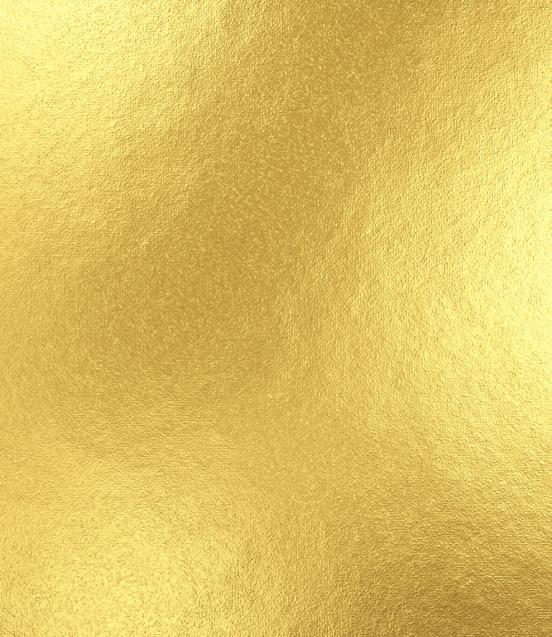

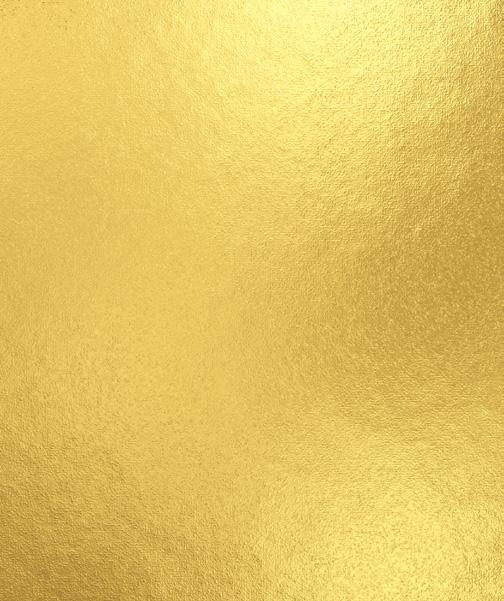

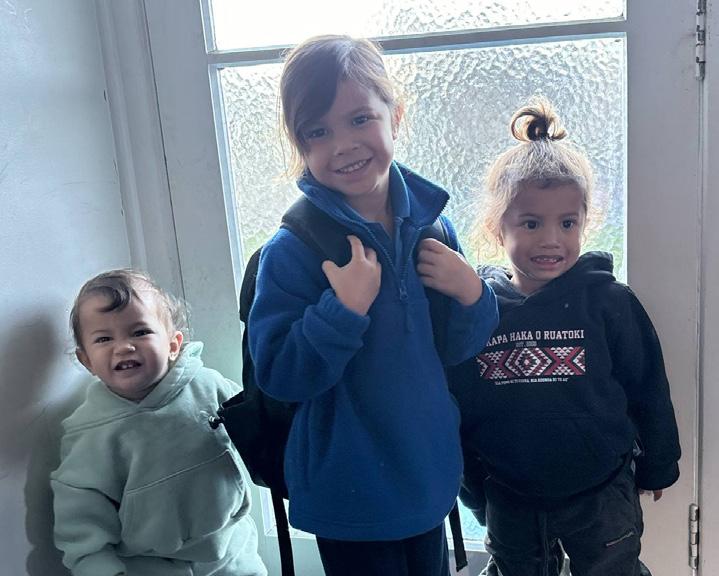
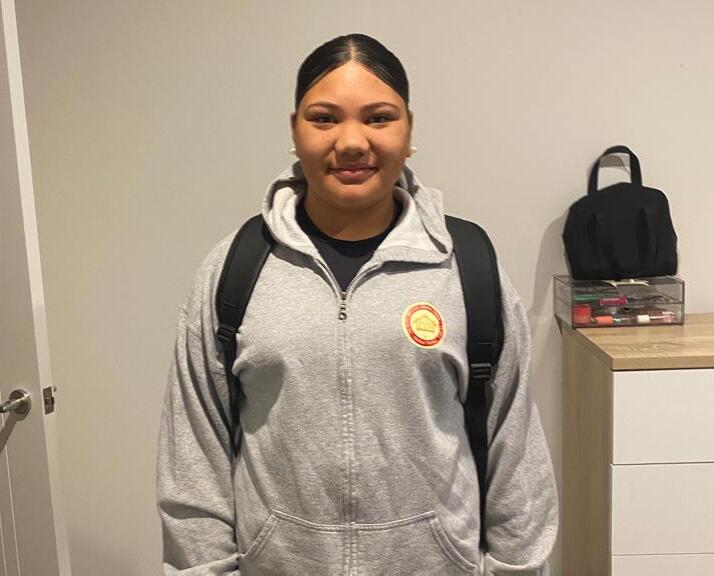





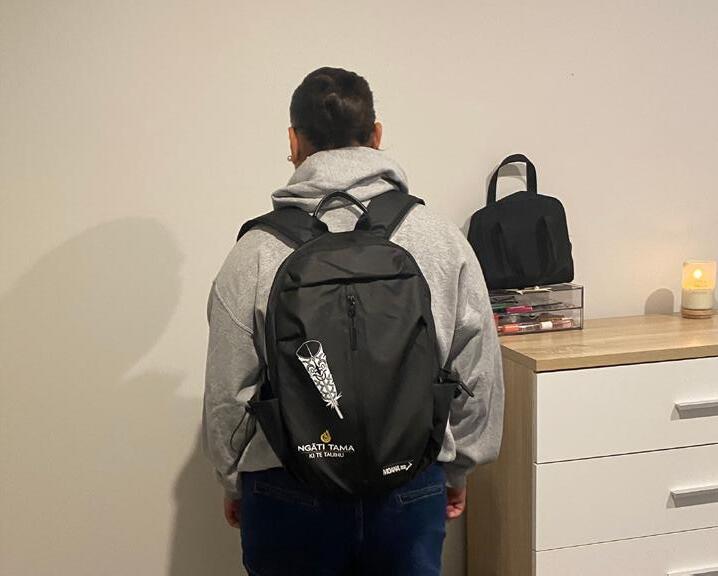
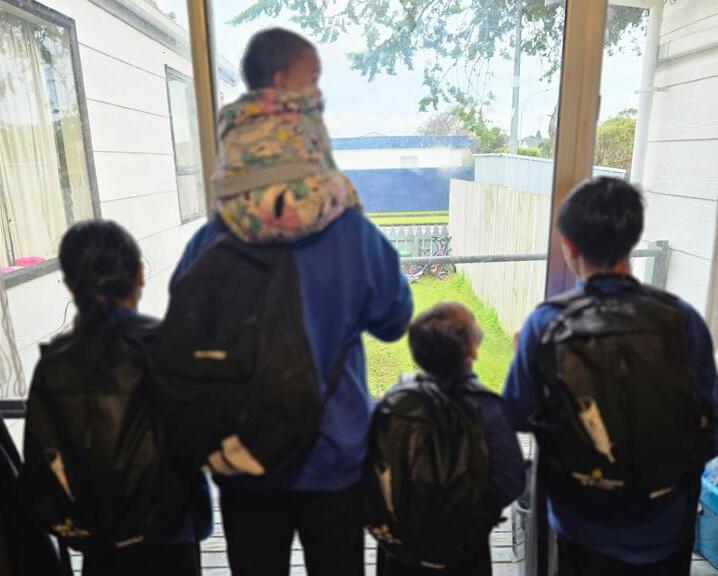
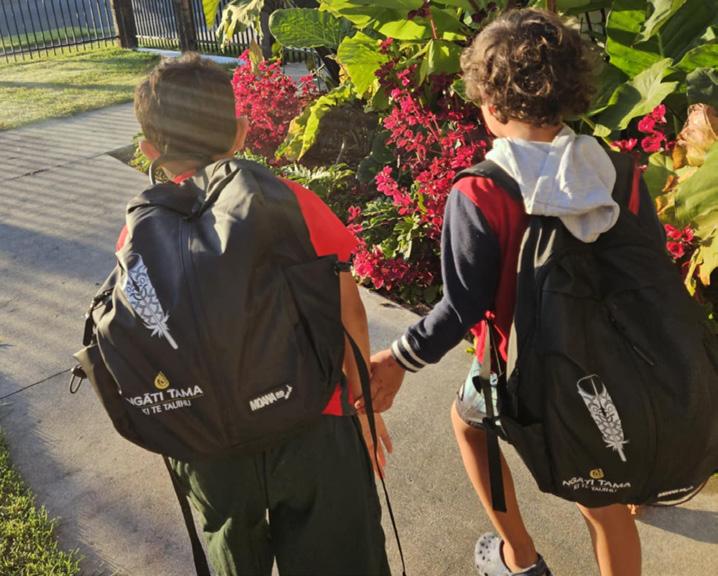
Ngāti Tama proudly supported our tamariki with a special school bag giveaway! This initiative was available to all Ngāti Tama tamariki enrolled in preschool, primary, intermediate, or secondary school. Ka mutu pea! Ngāti Tama –supporting our future leaders!
BELOW: Tamariki proudly wear their pēke and show off their whakapapa.



Friday 12th DecemberSunday 14th December 2025


WHAKAPĀ MAI | CONTACT US
NGĀTI TAMA KI TE WAIPOUNAMU TRUST 74 Waimea Road, Nelson 7010
MAILING ADDRESS PO Box 914, Nelson 7040
TARI 03 458 1740 | 0800 8262 494 (TAMA IWI) pouawhina@ngati-tama.iwi.nz
NGĀTI TAMA ONLINE ngatitama.nz | whanau@ngati-tama.iwi.nz
